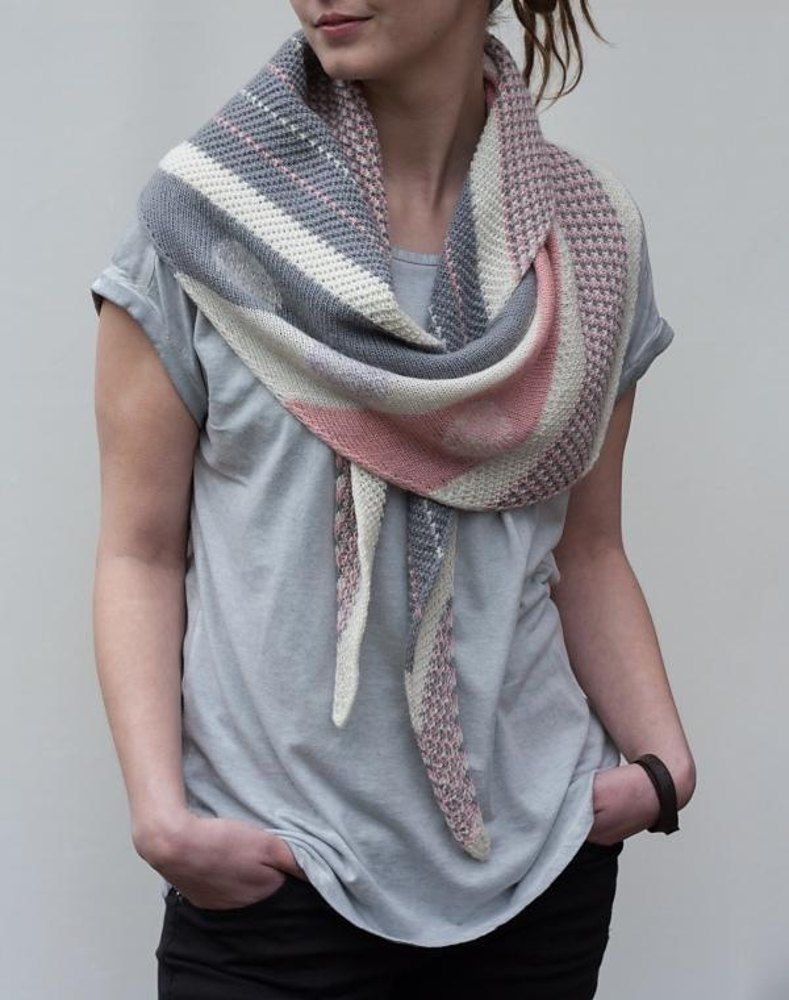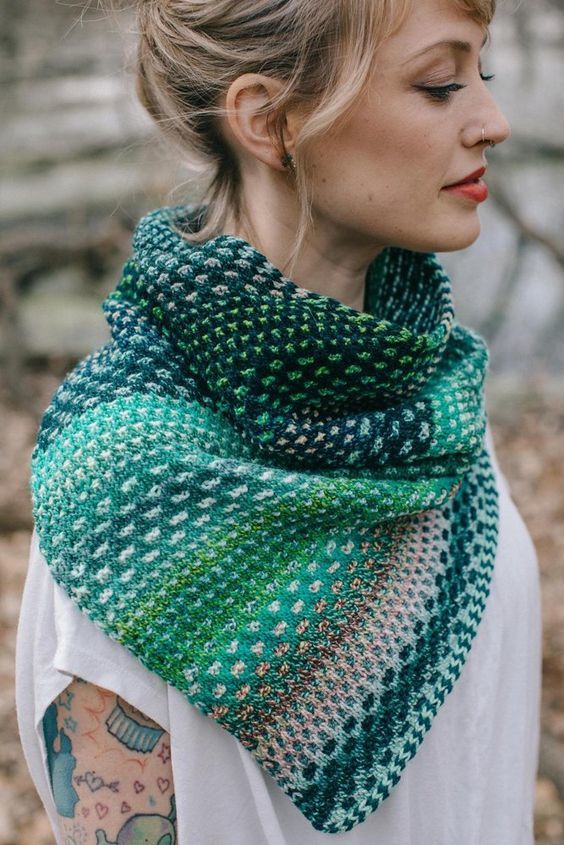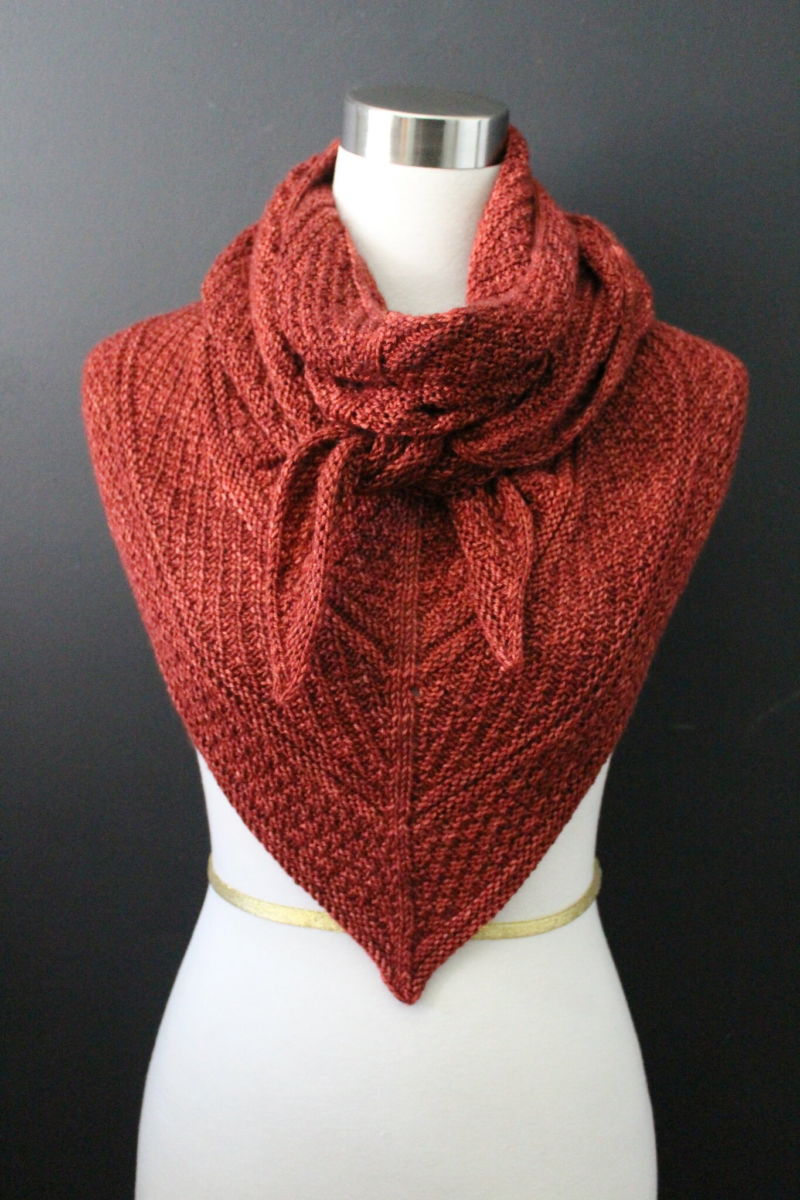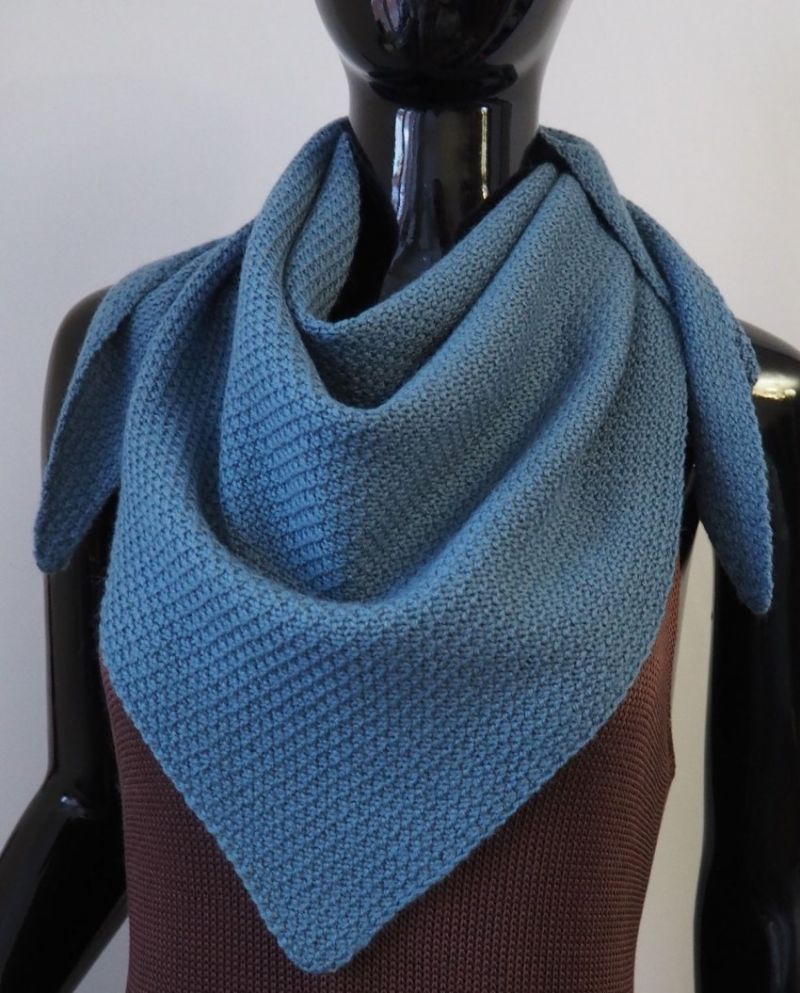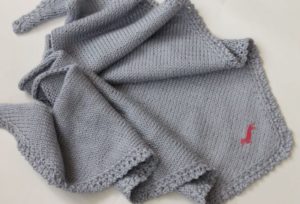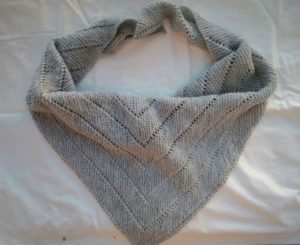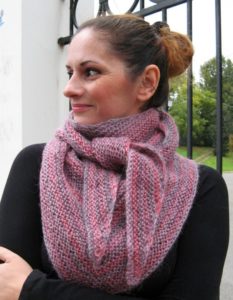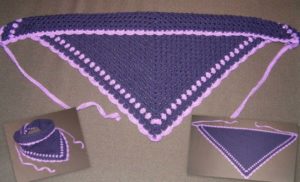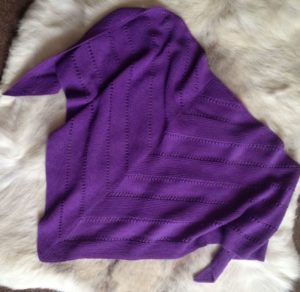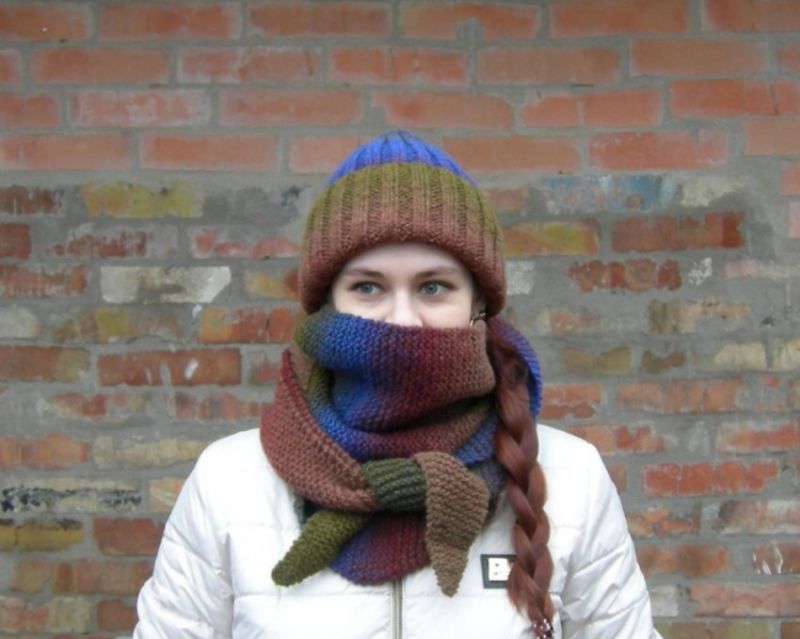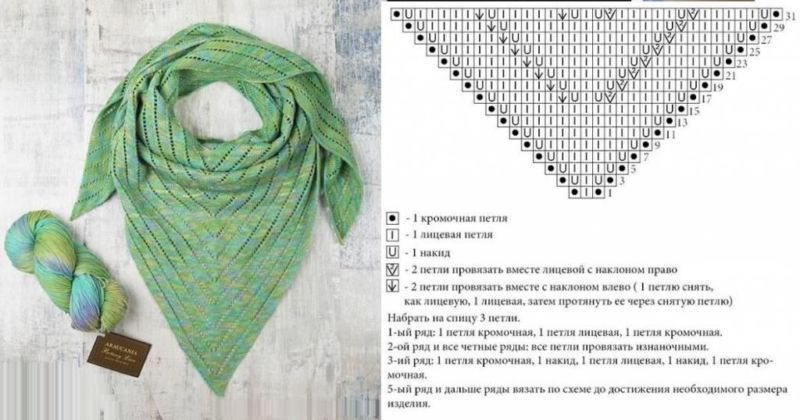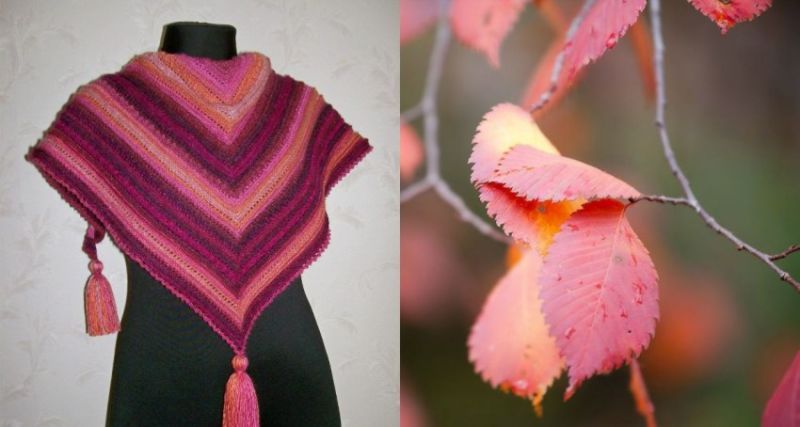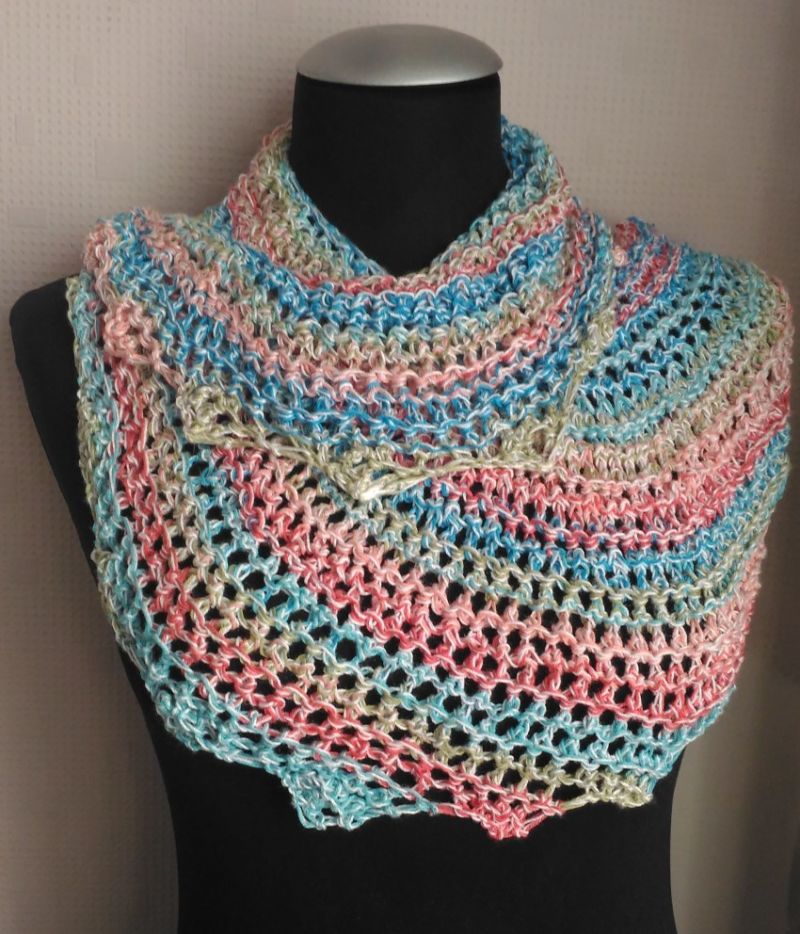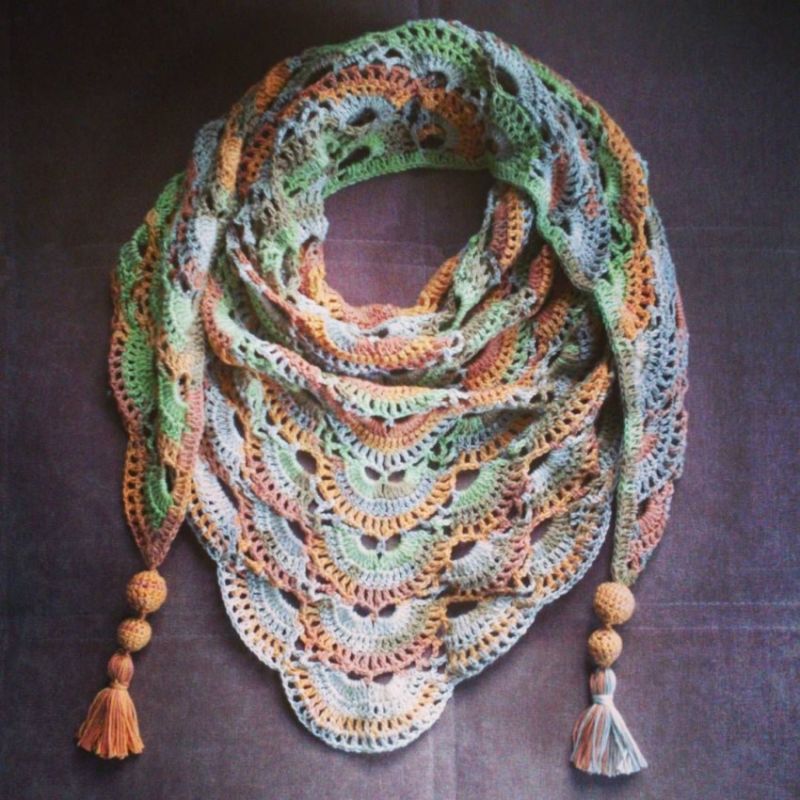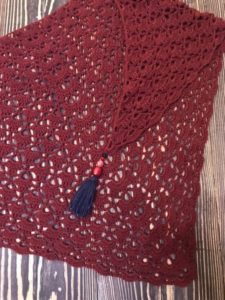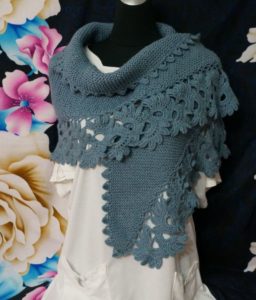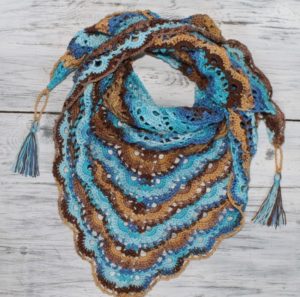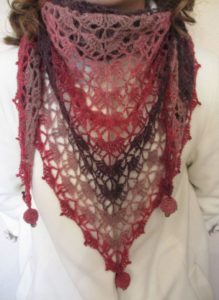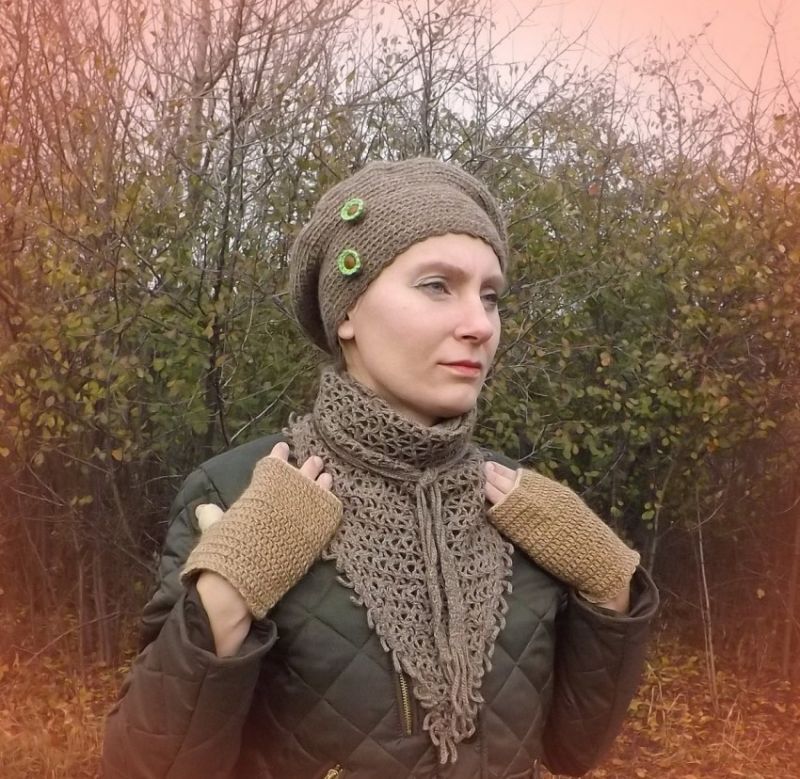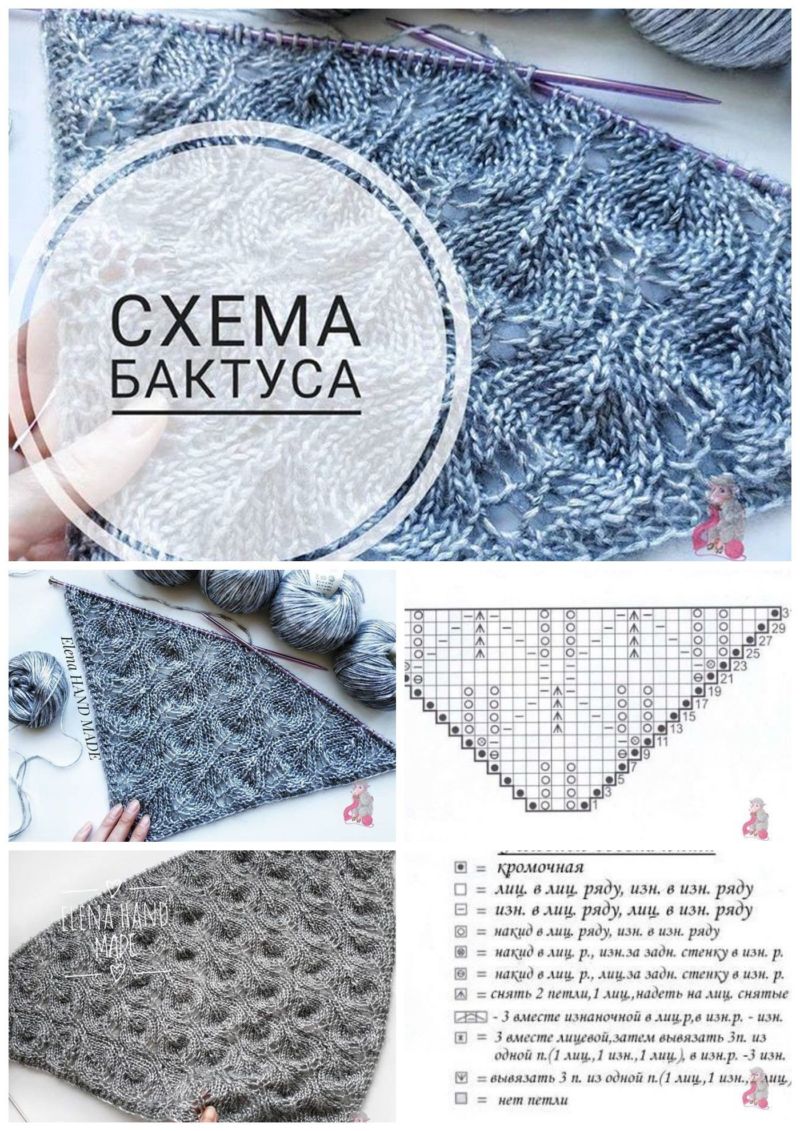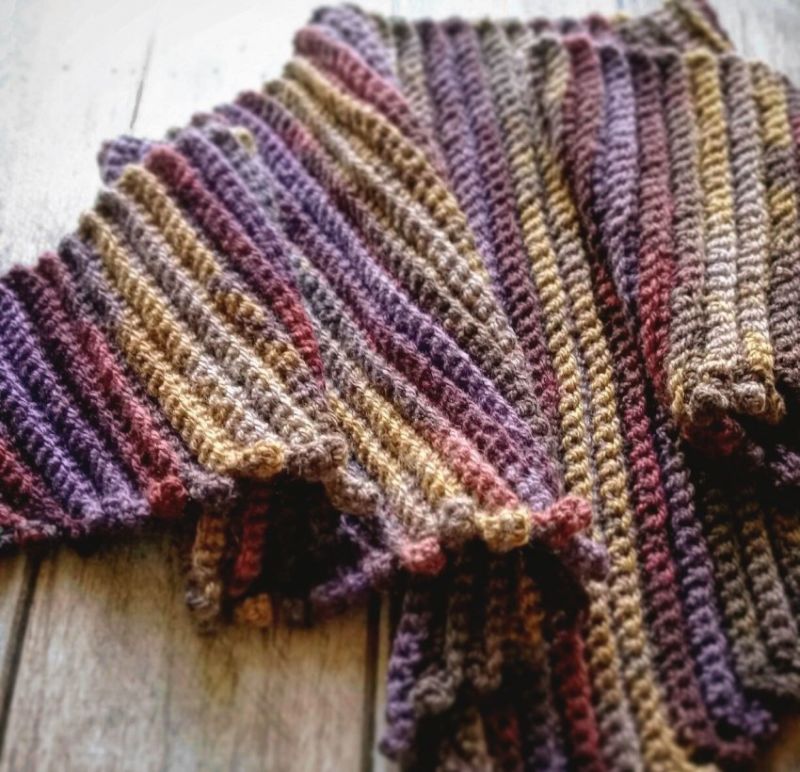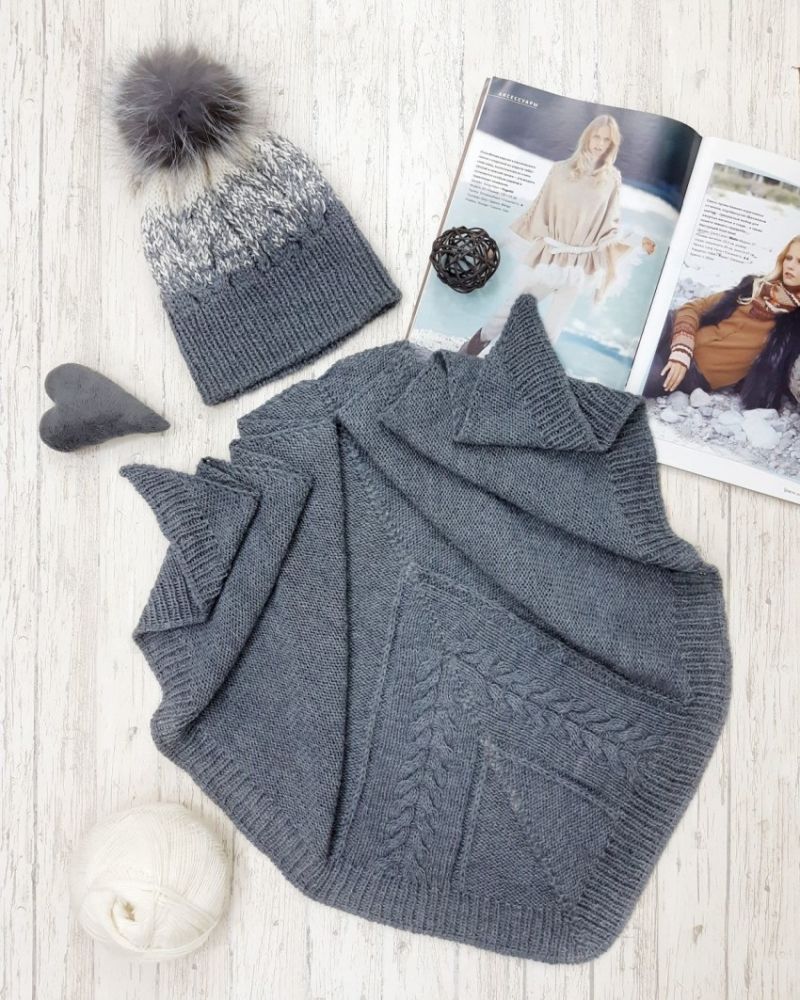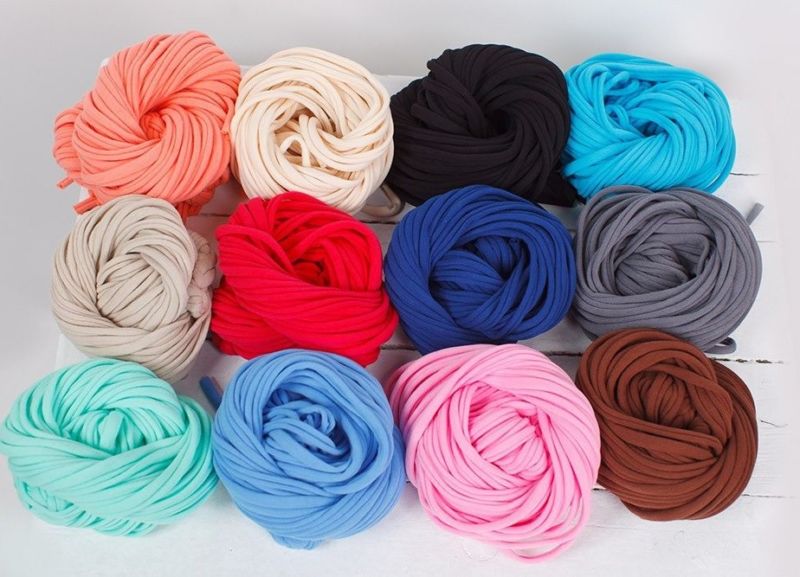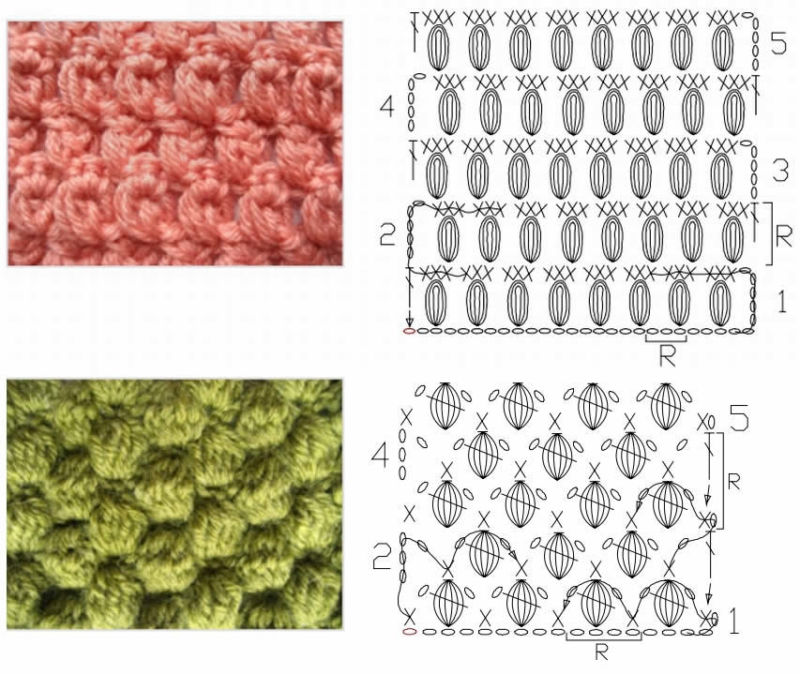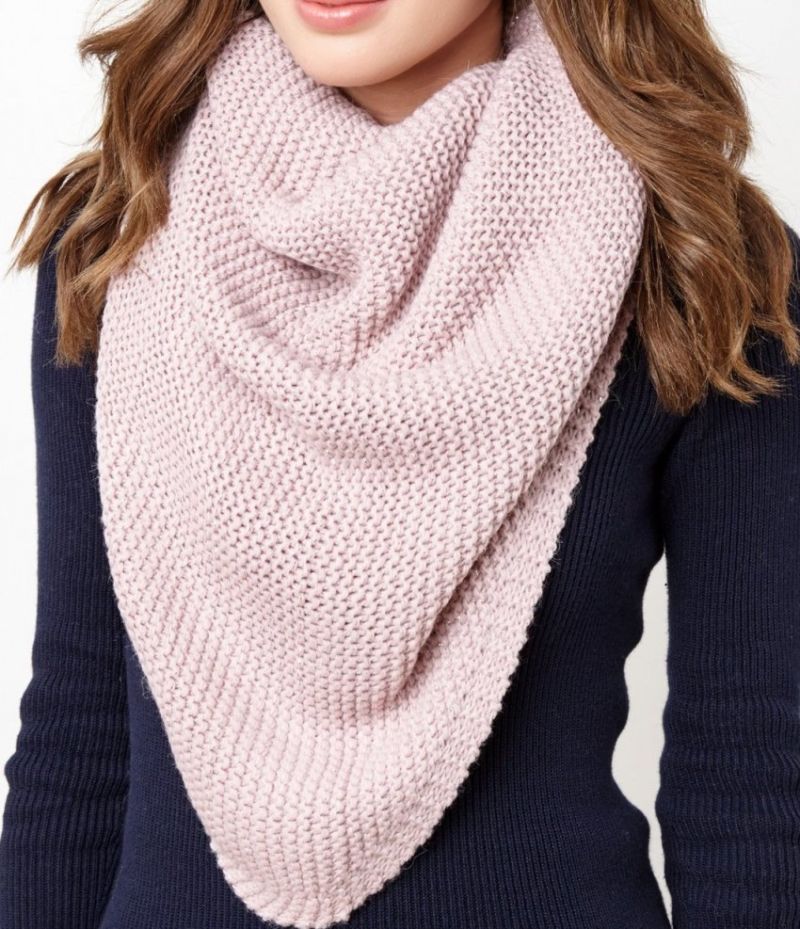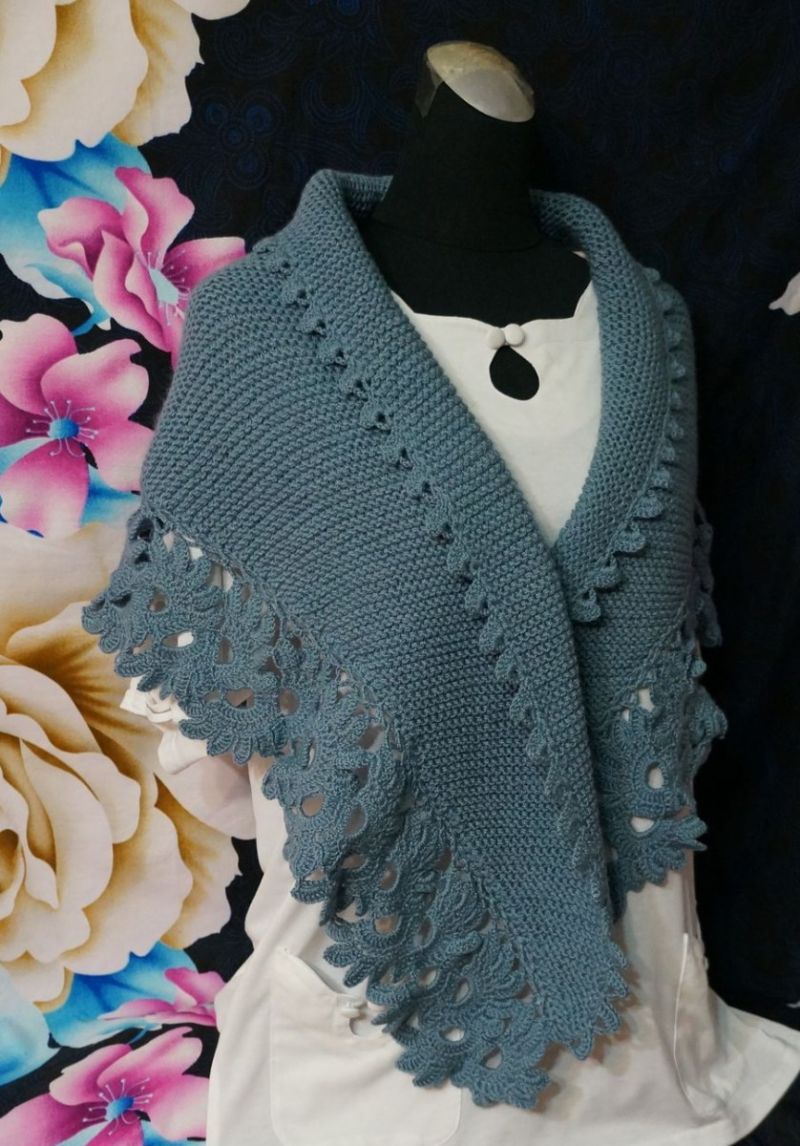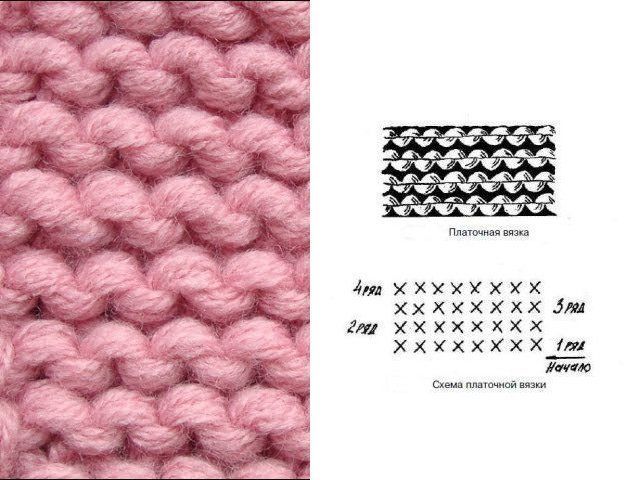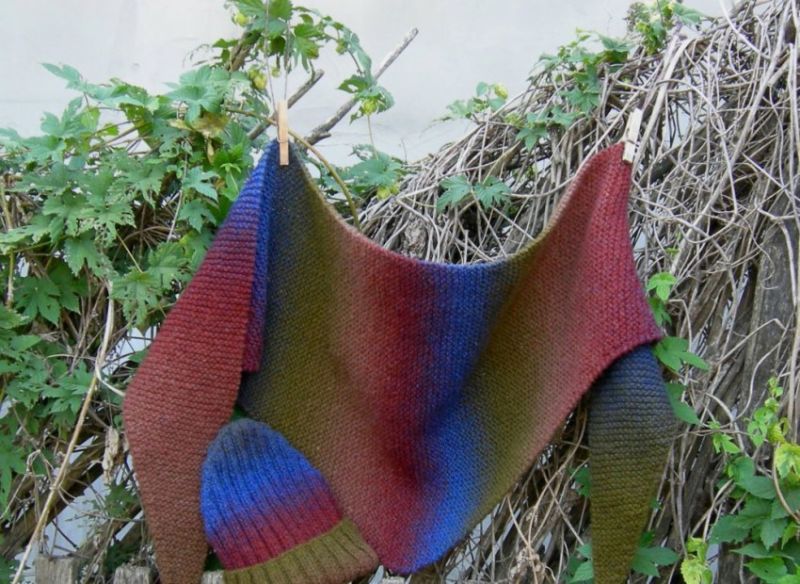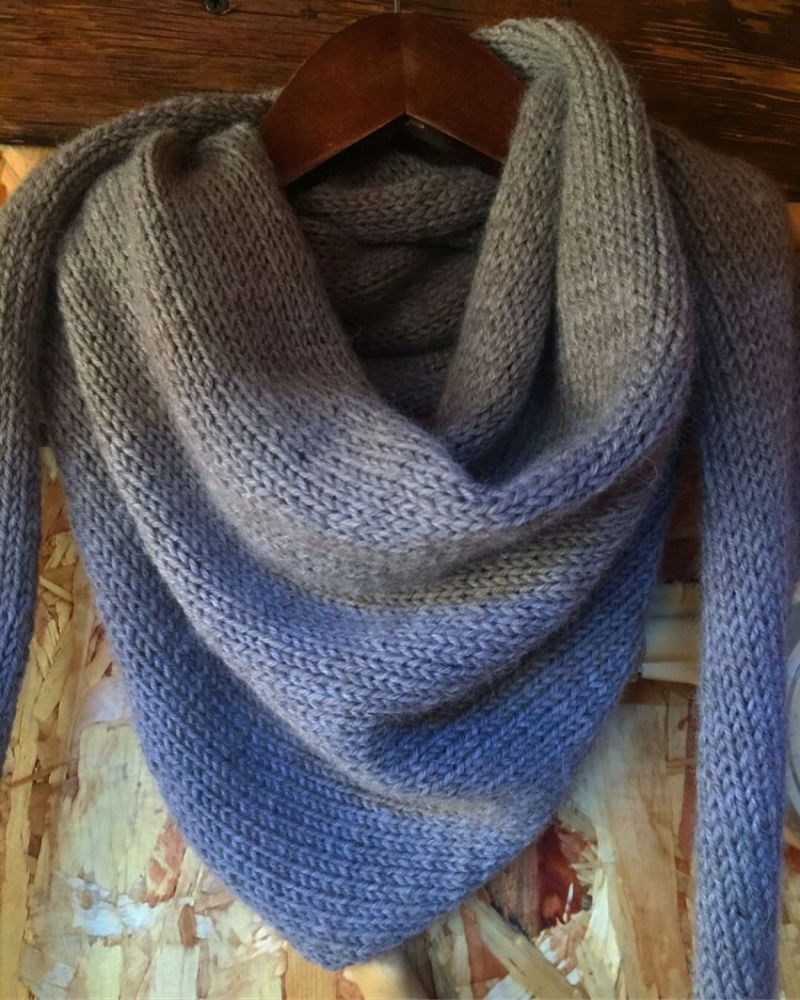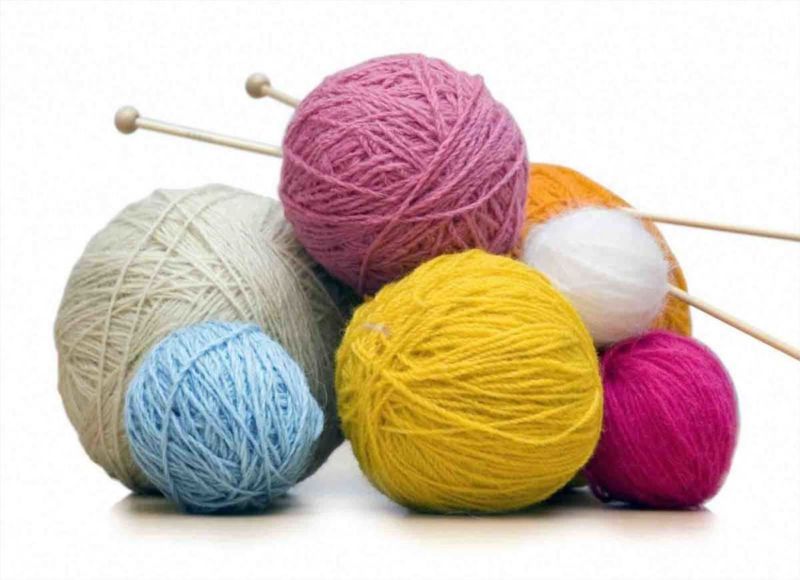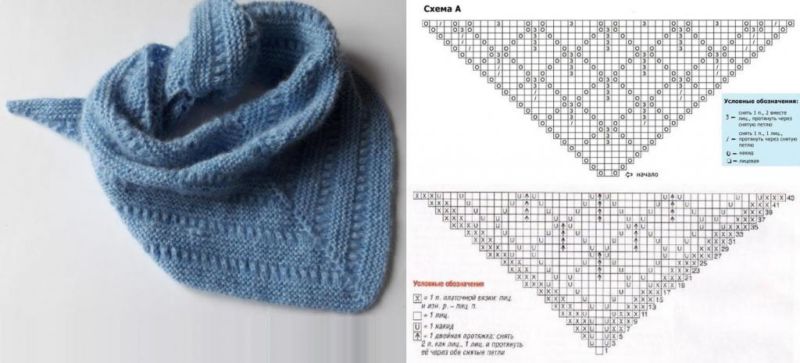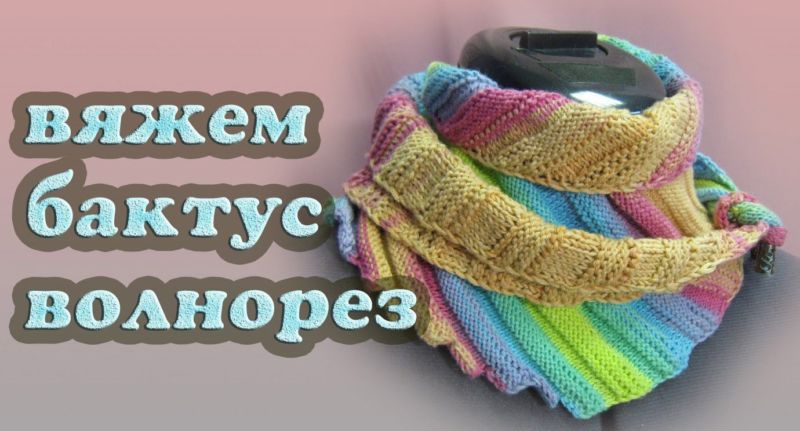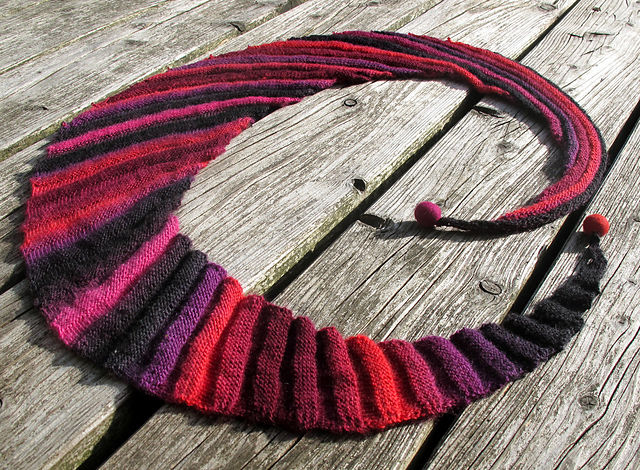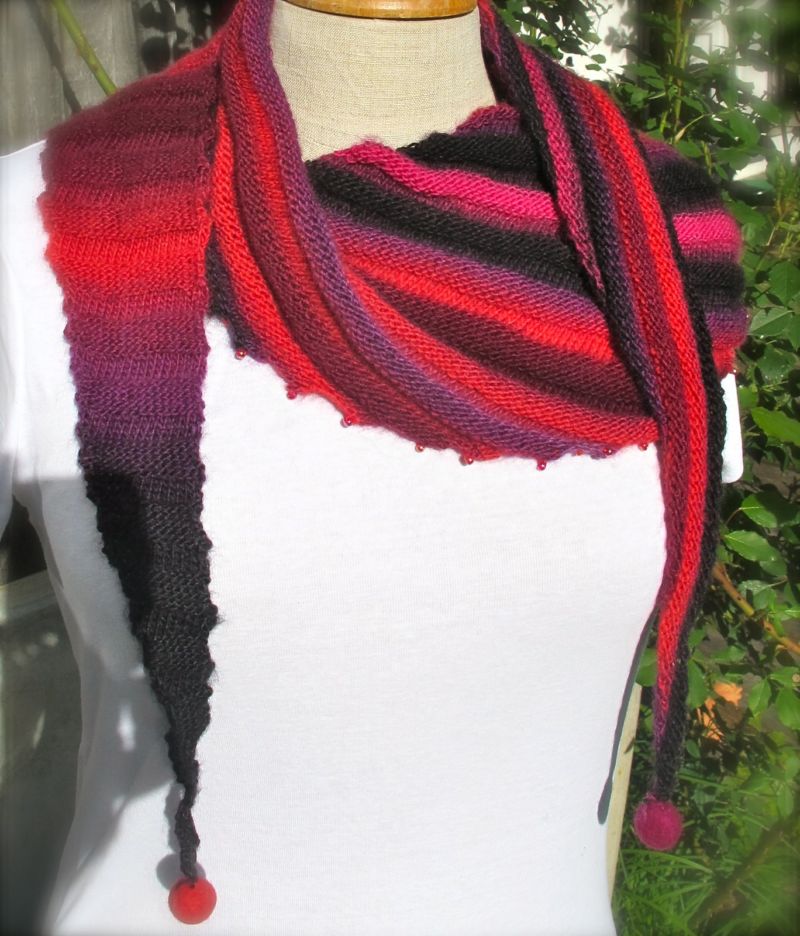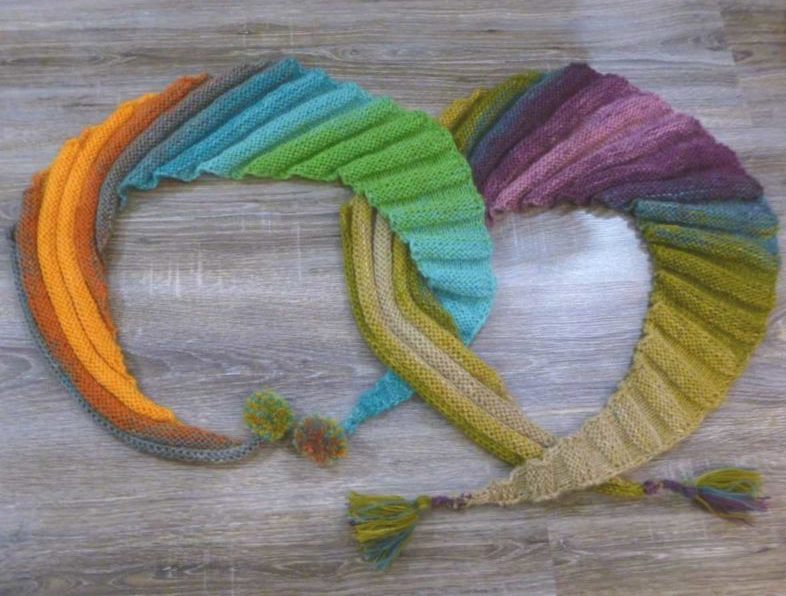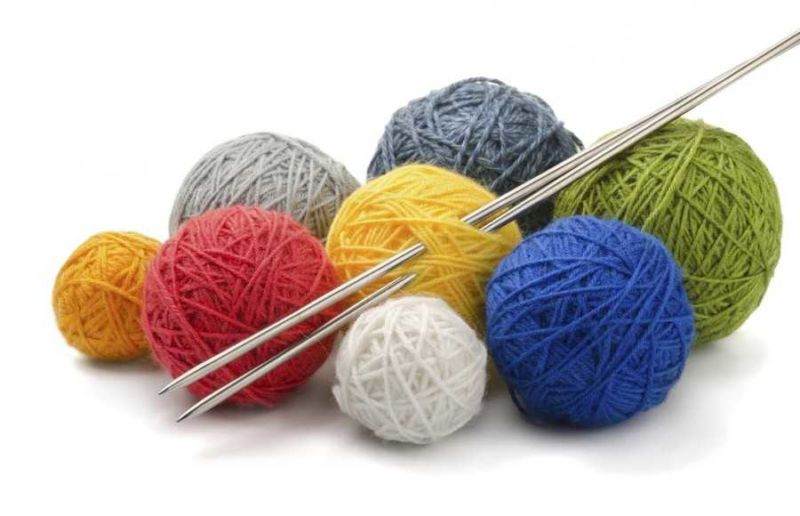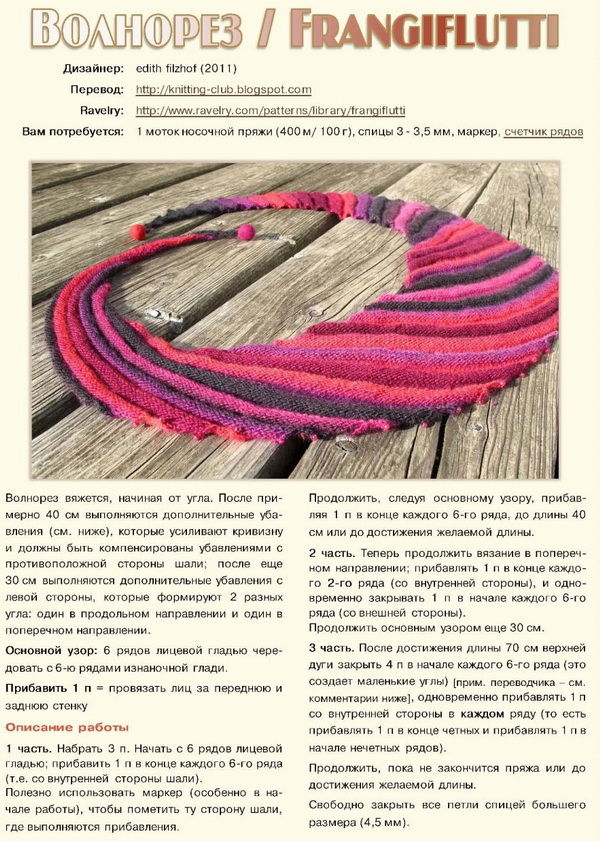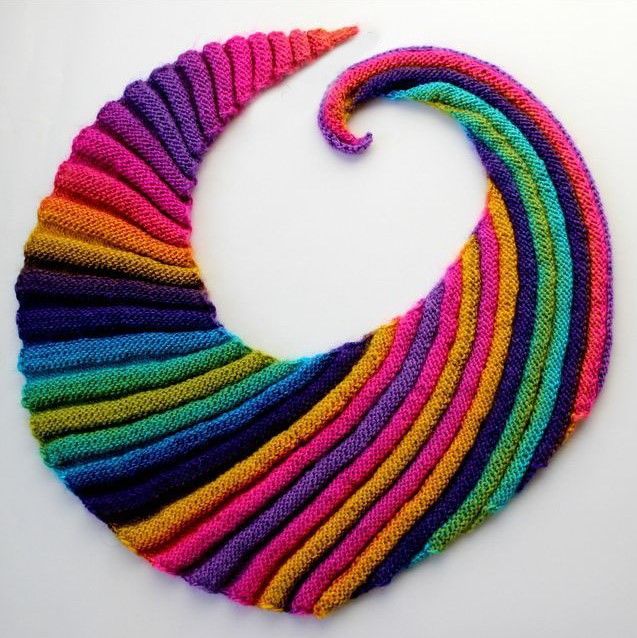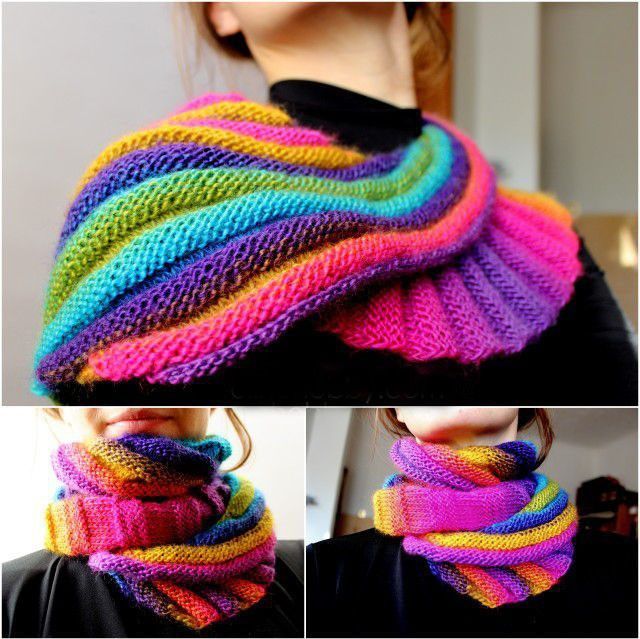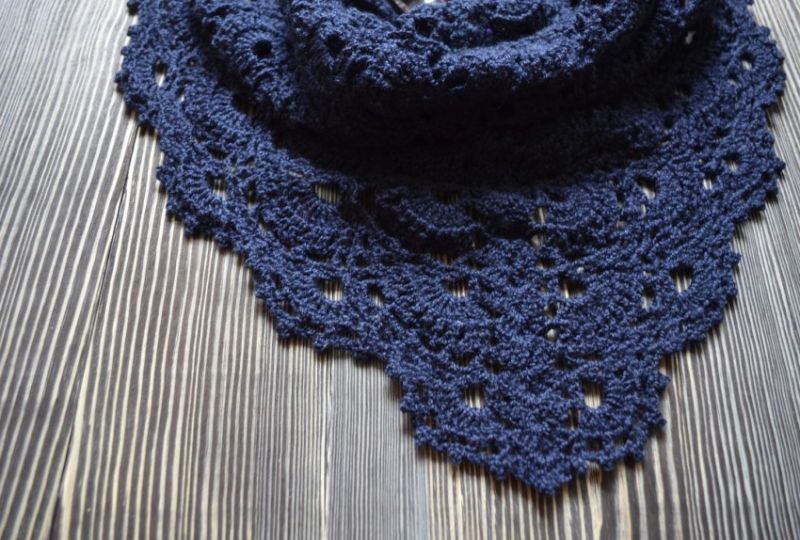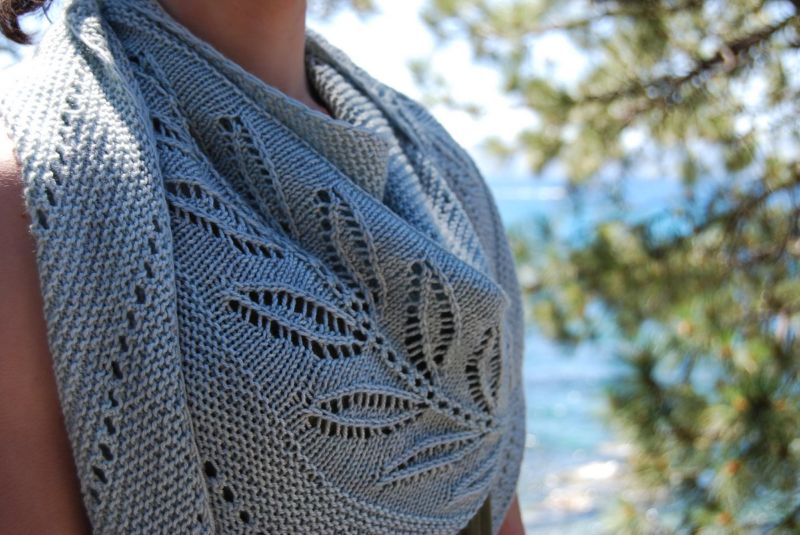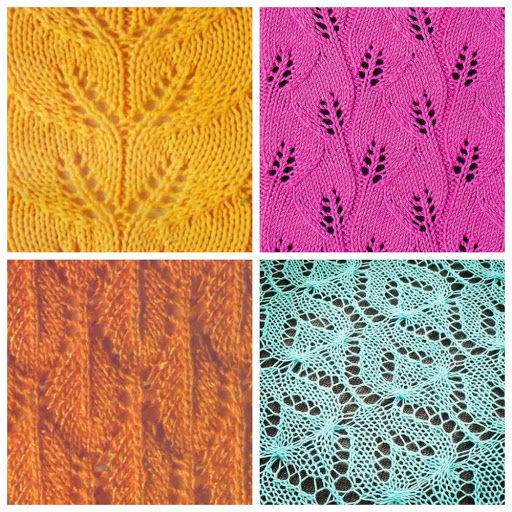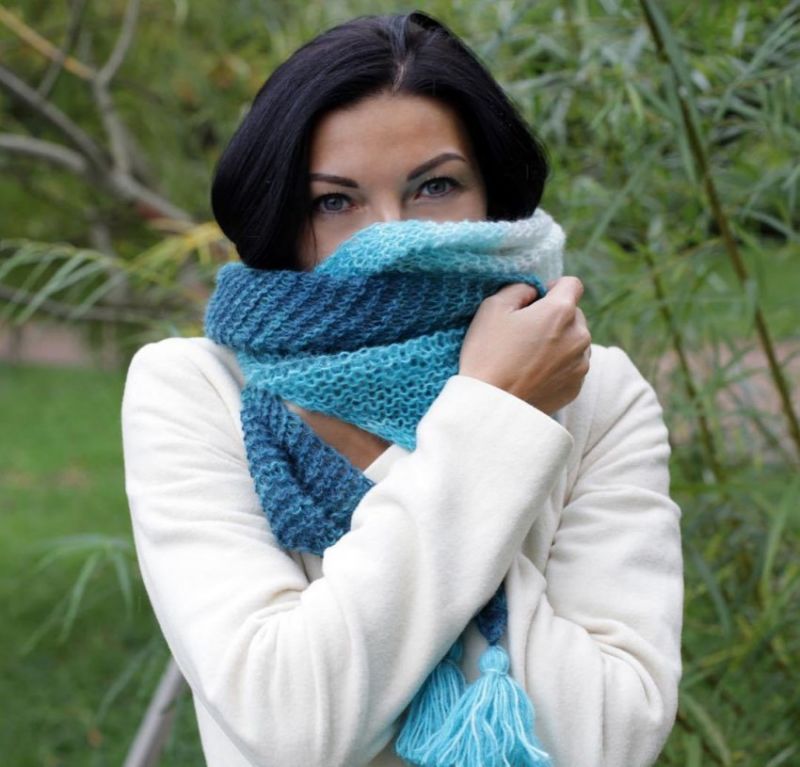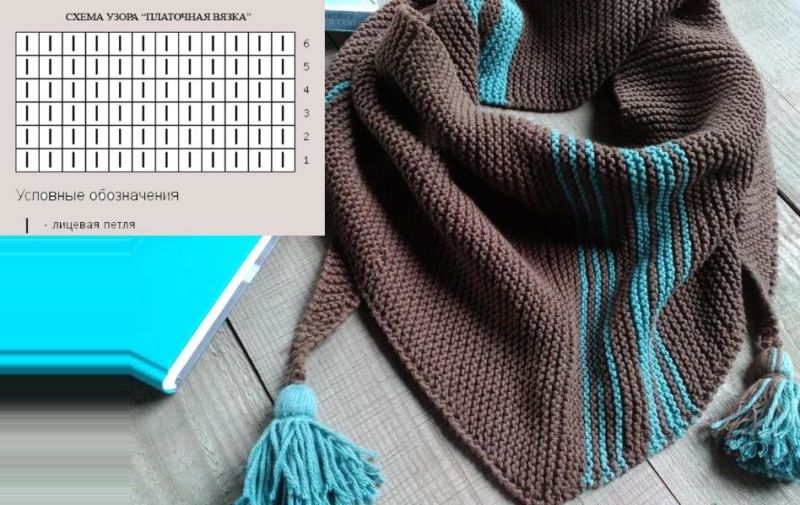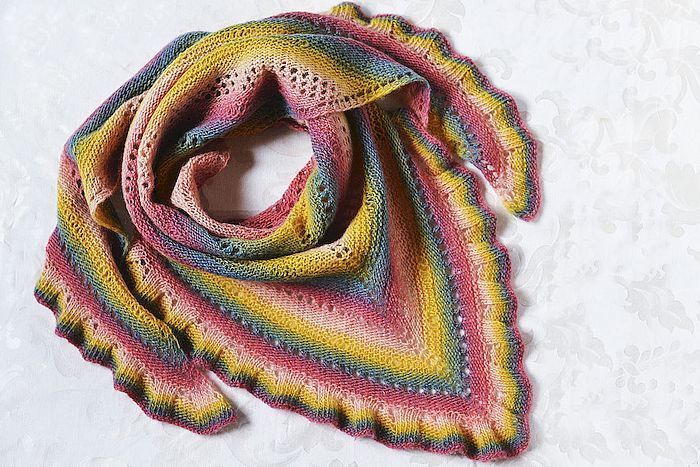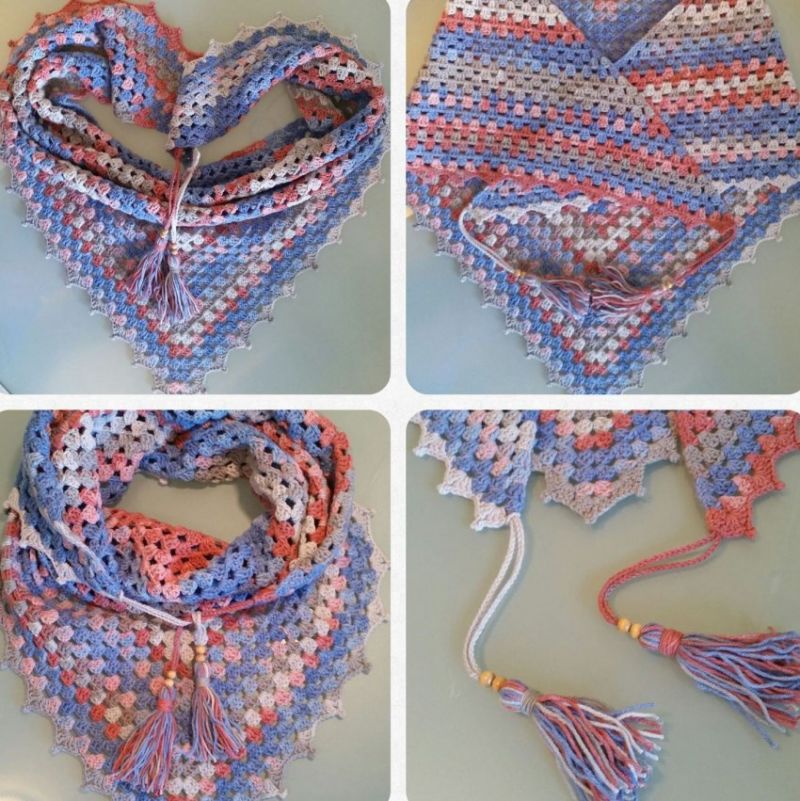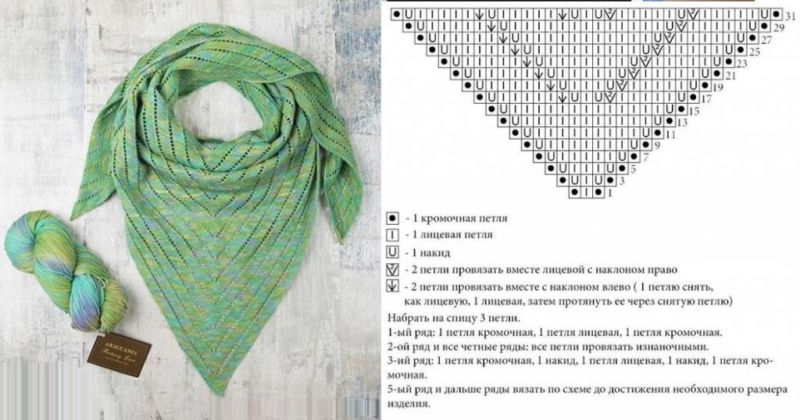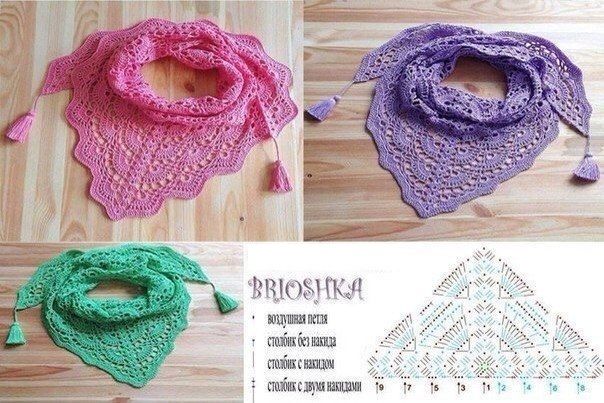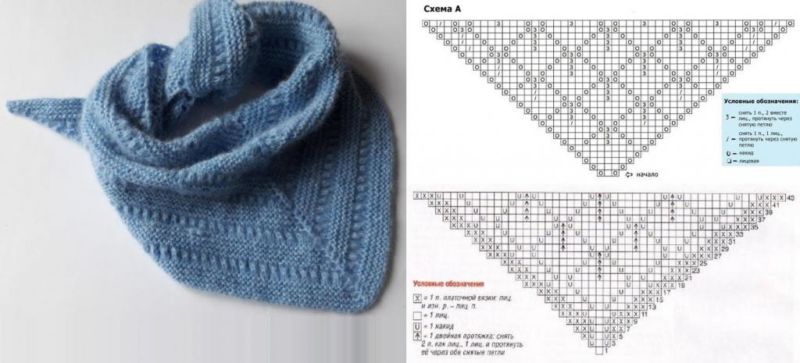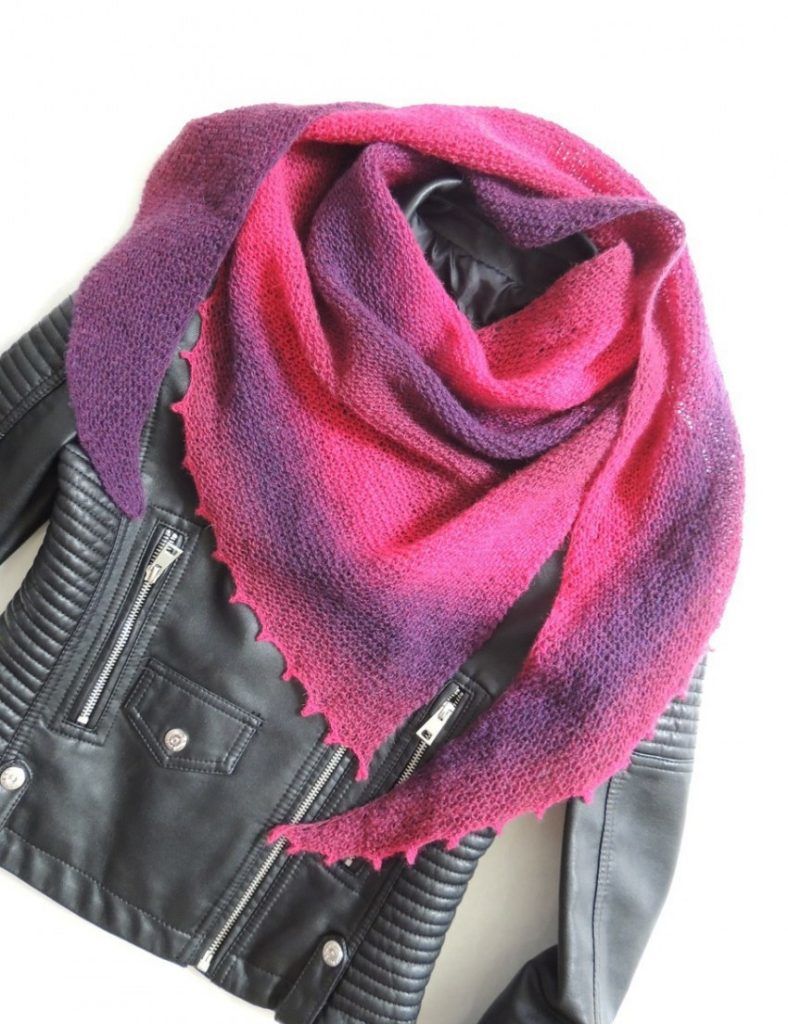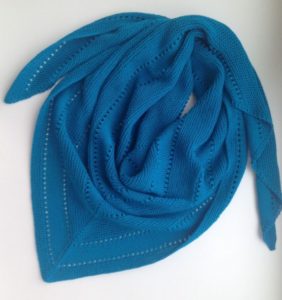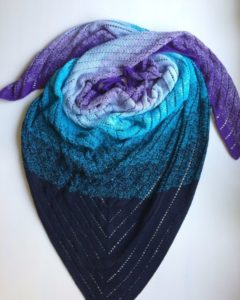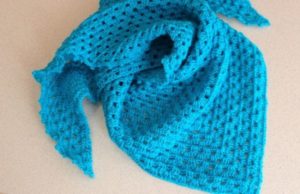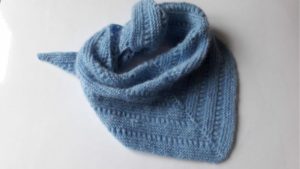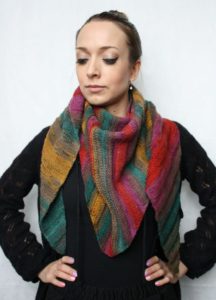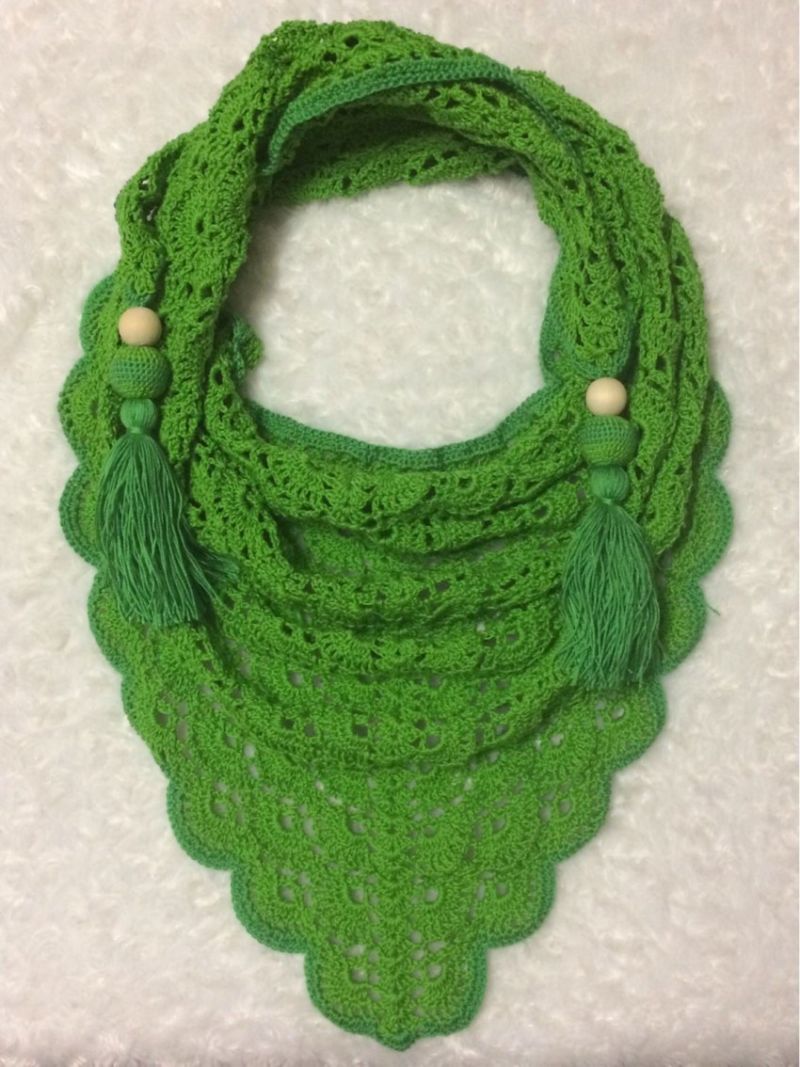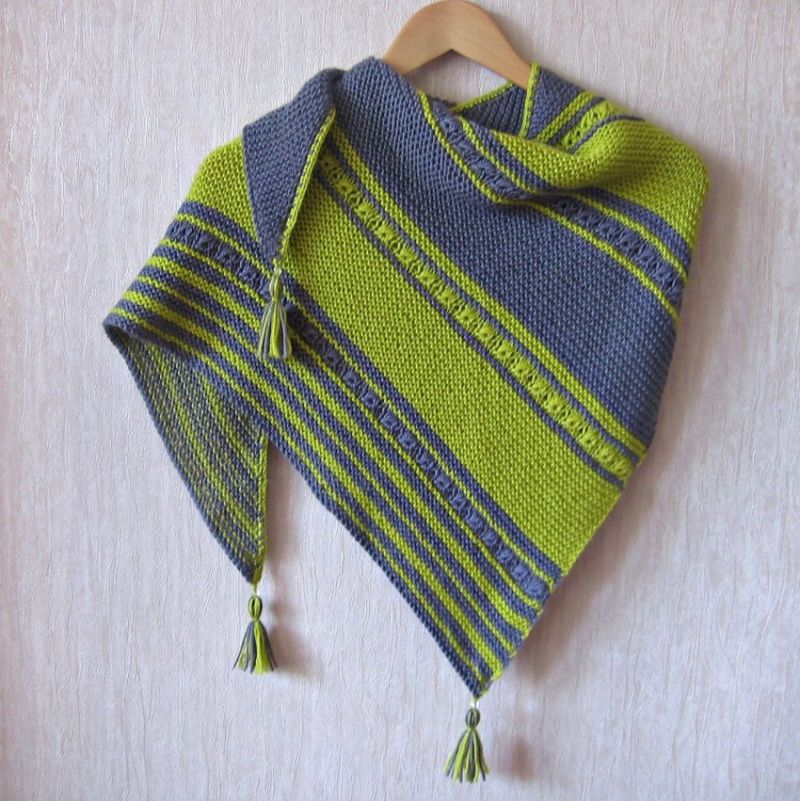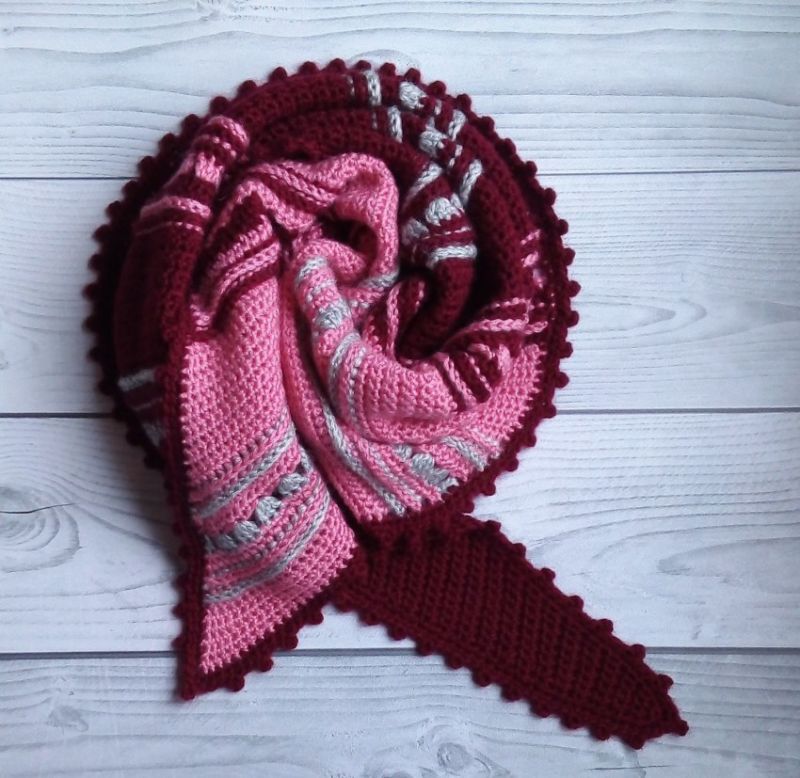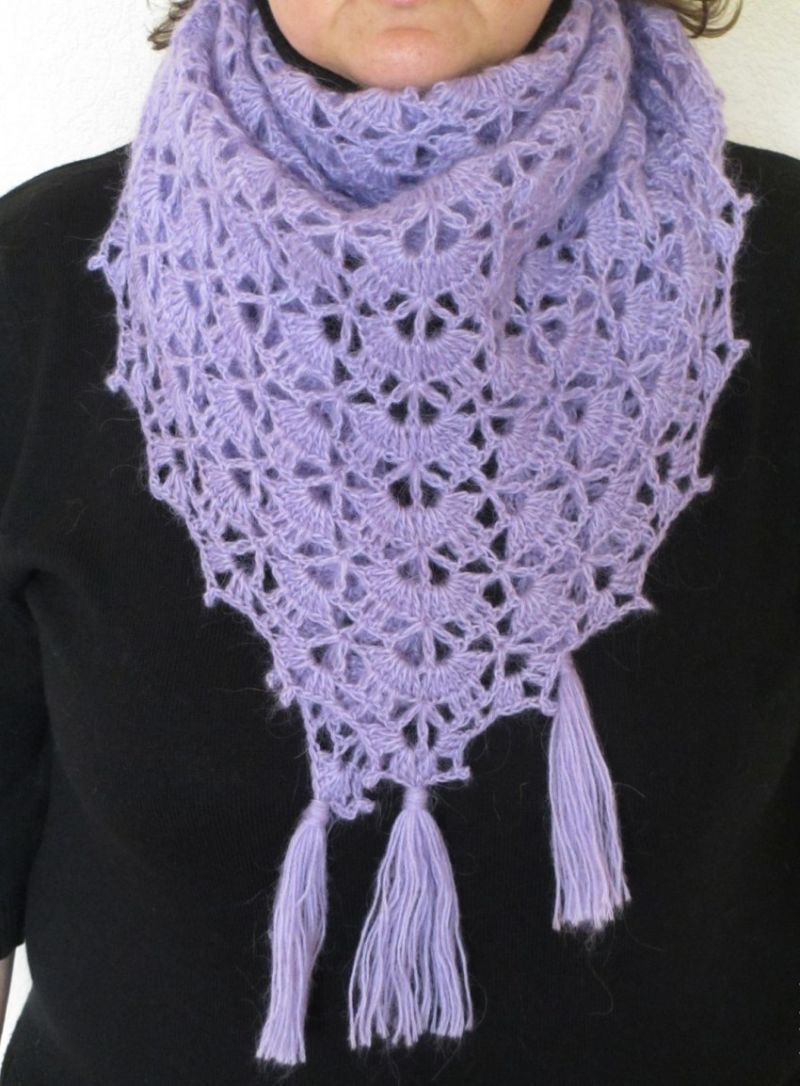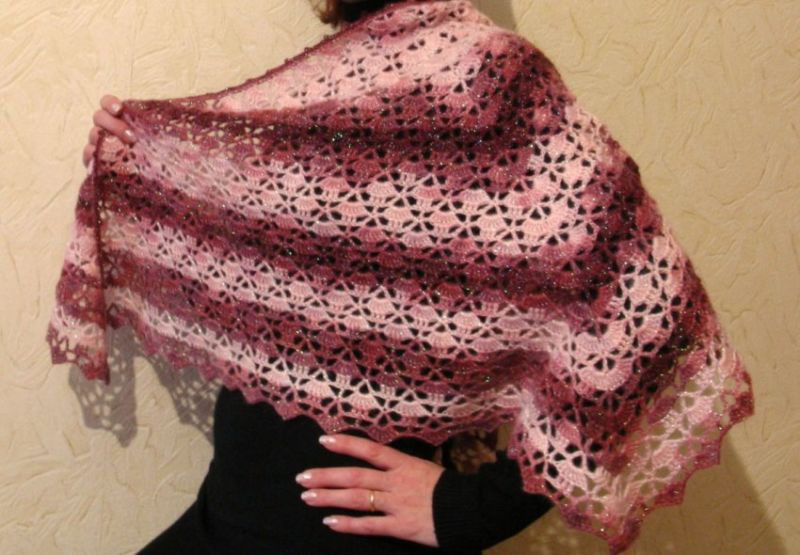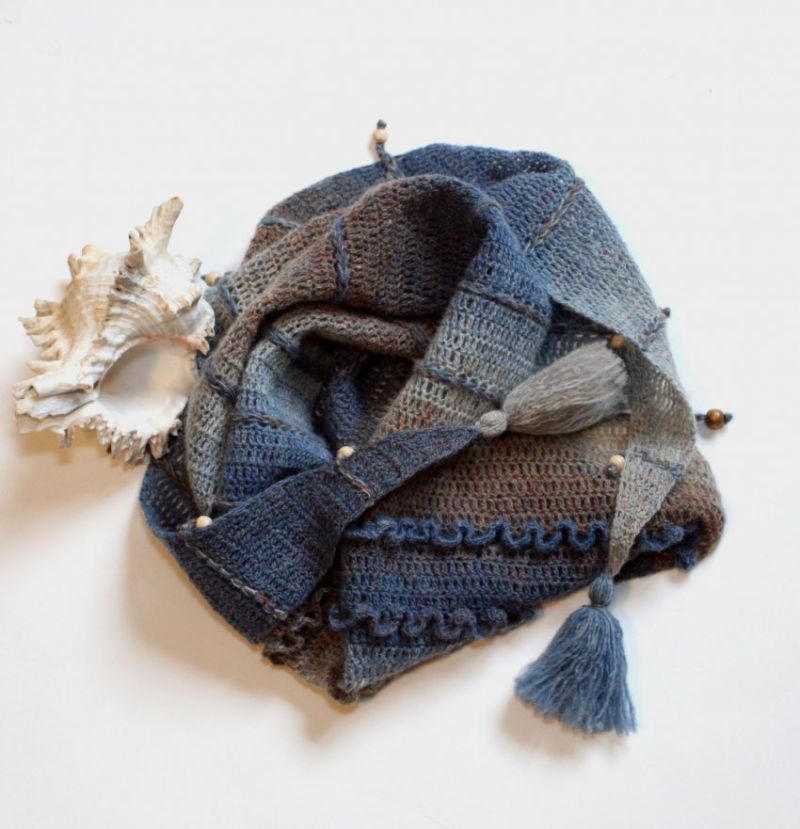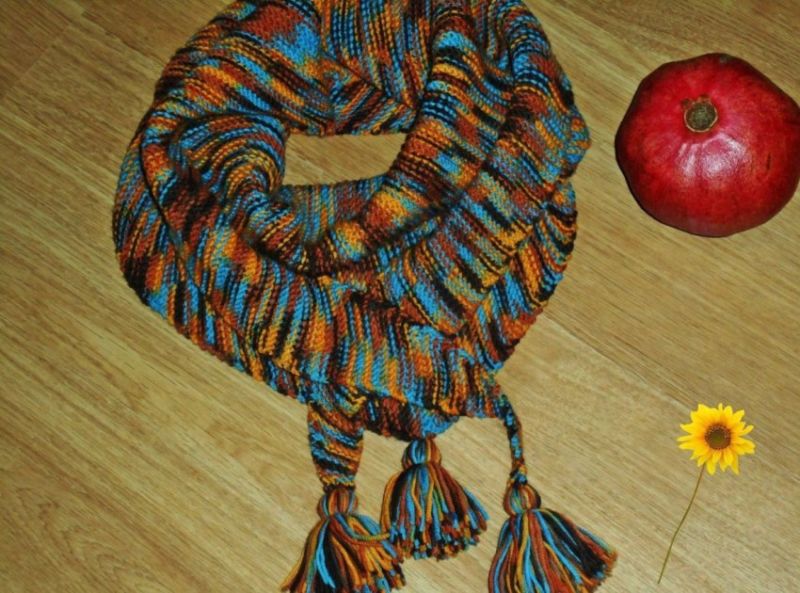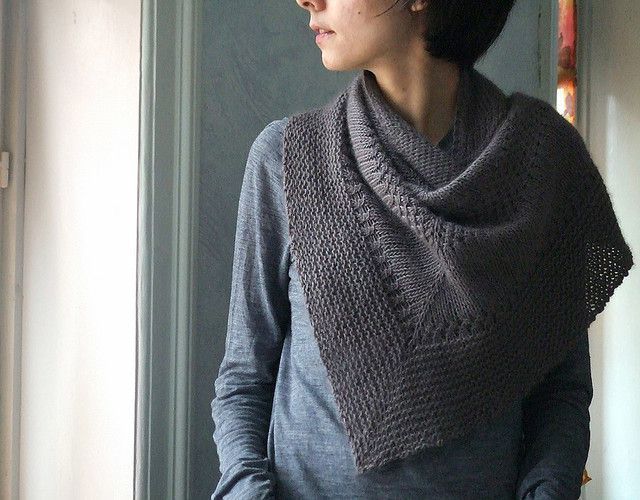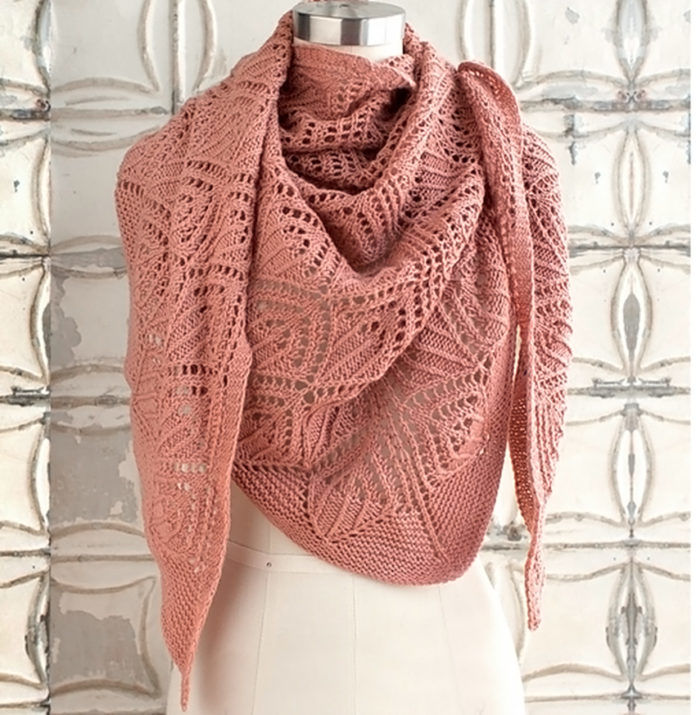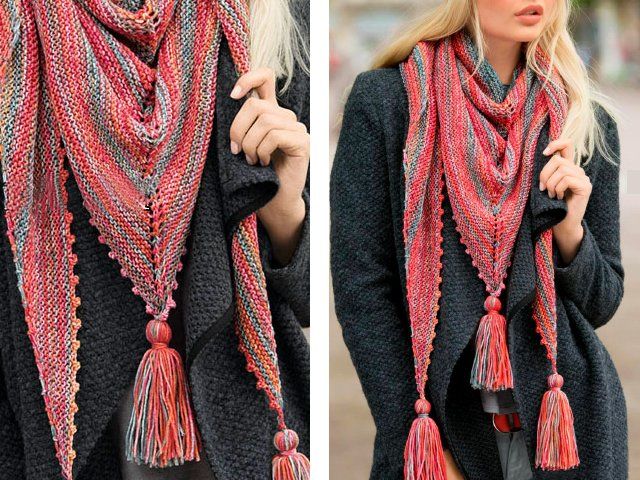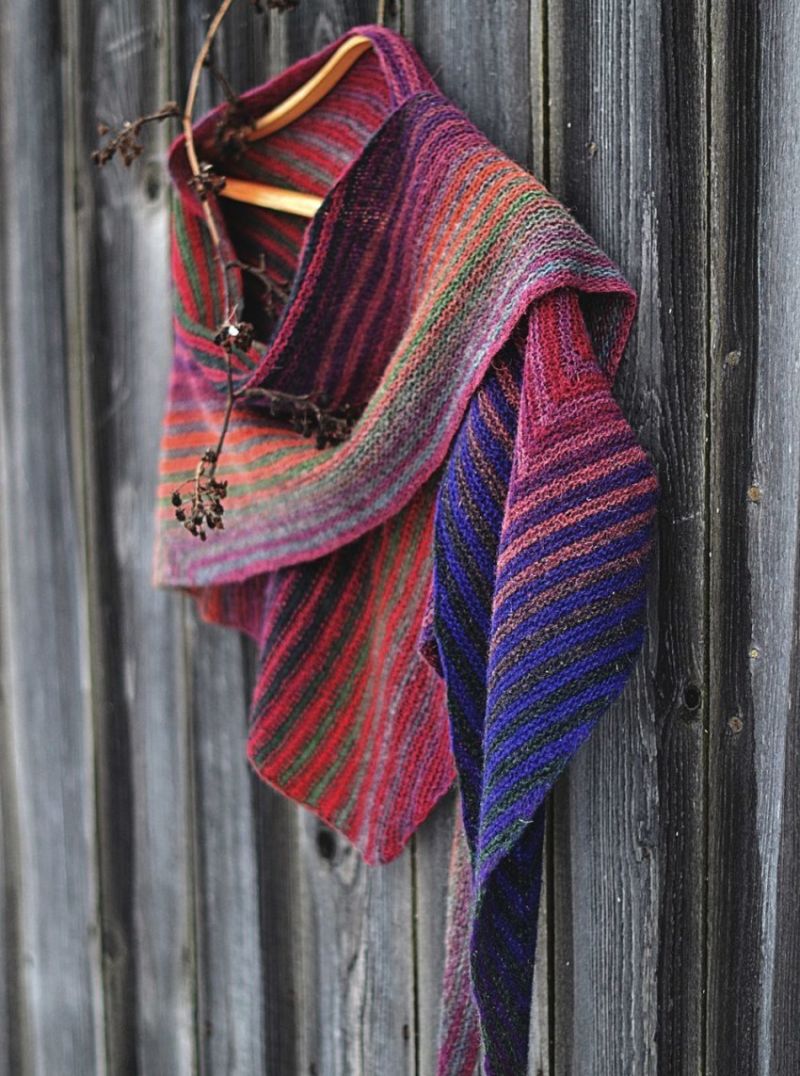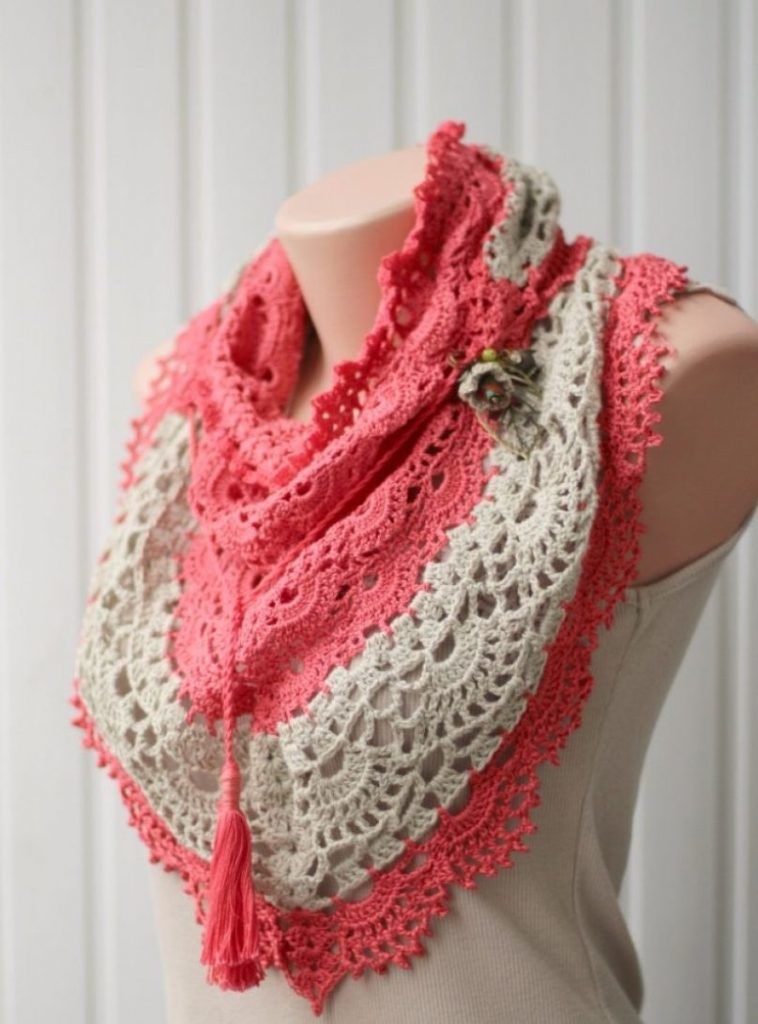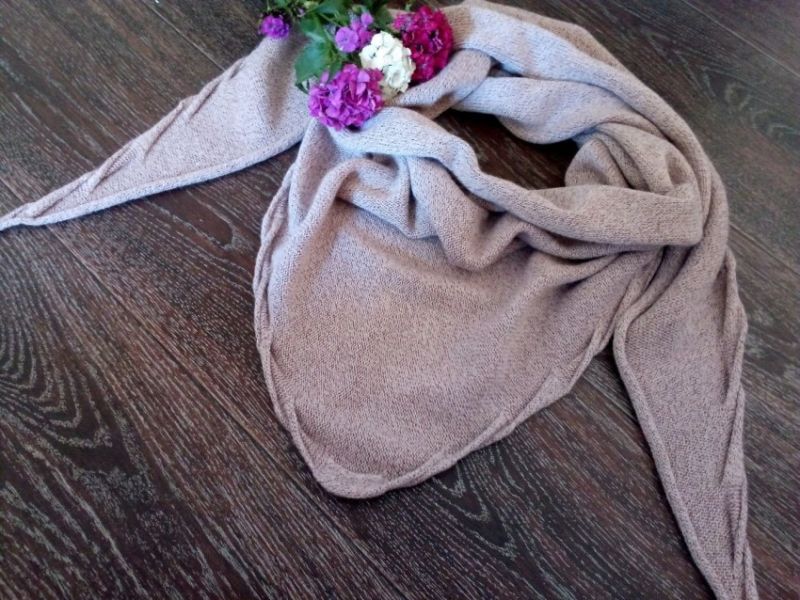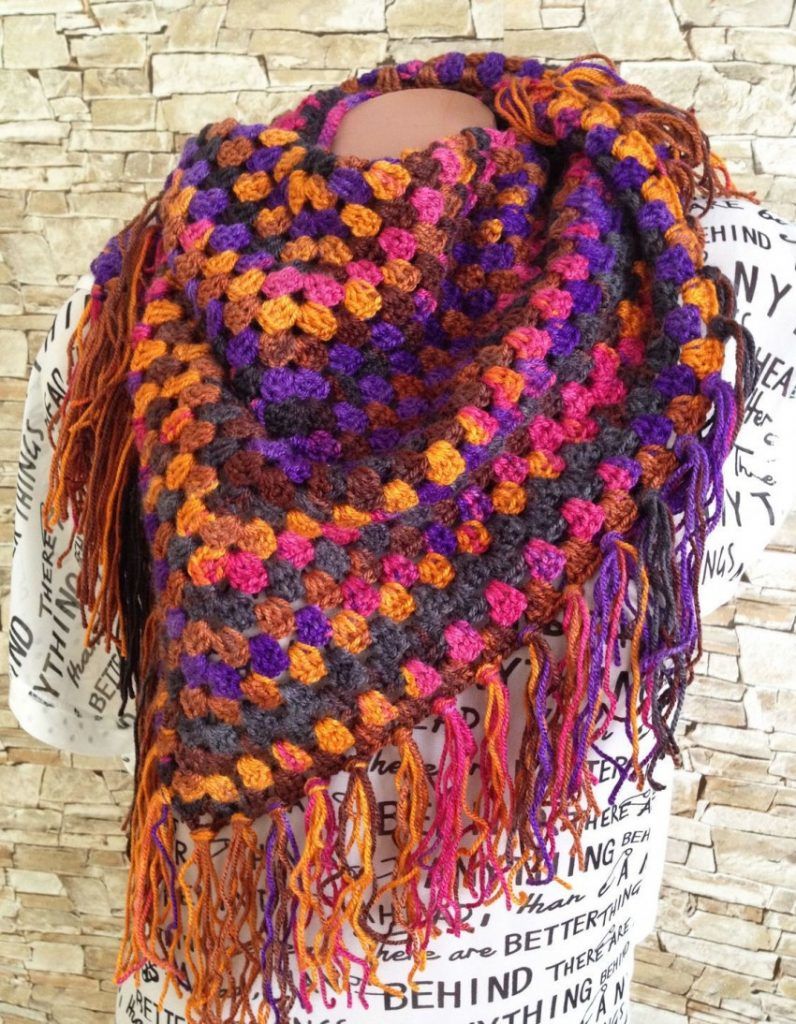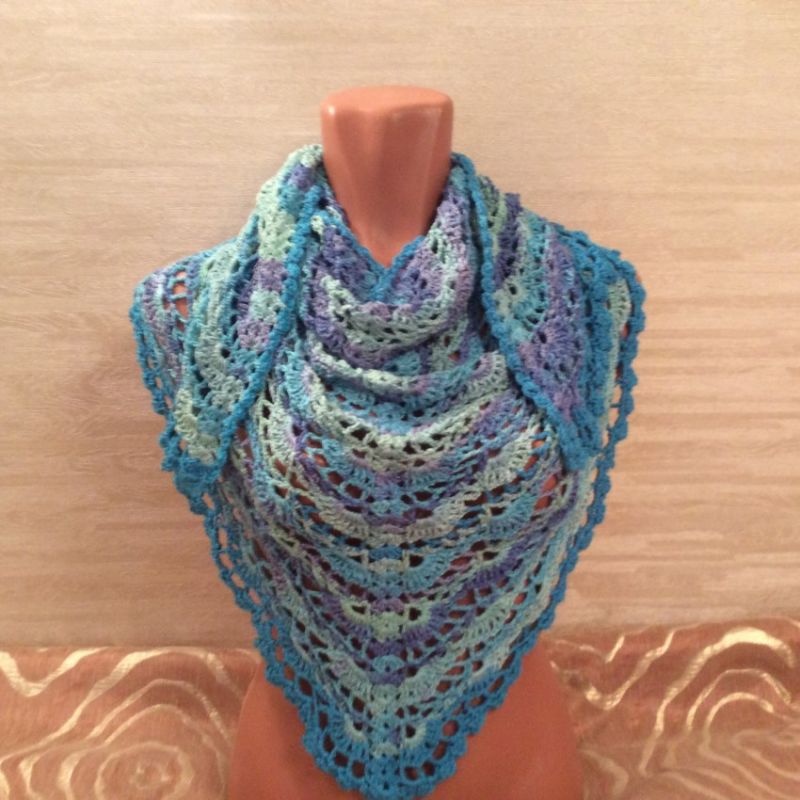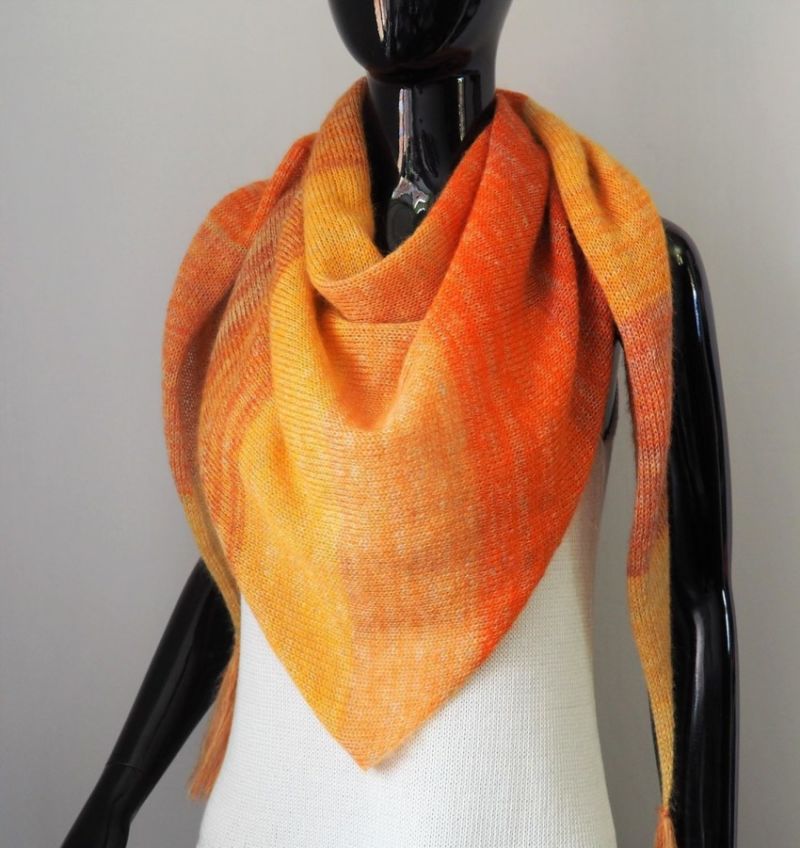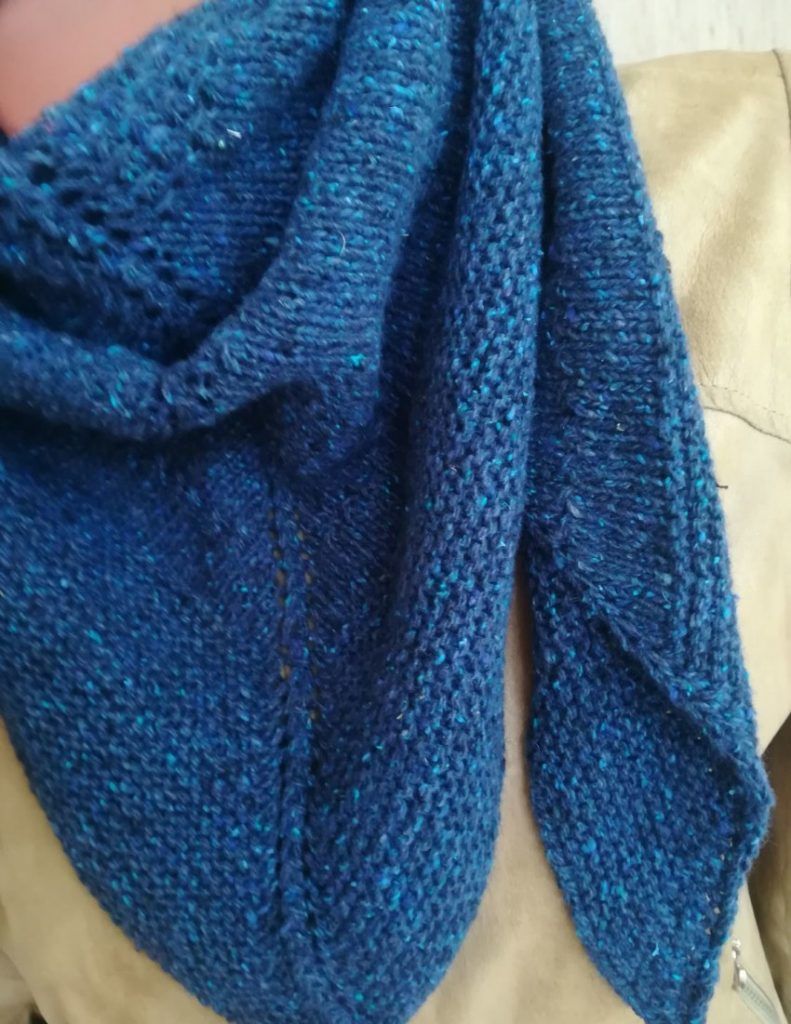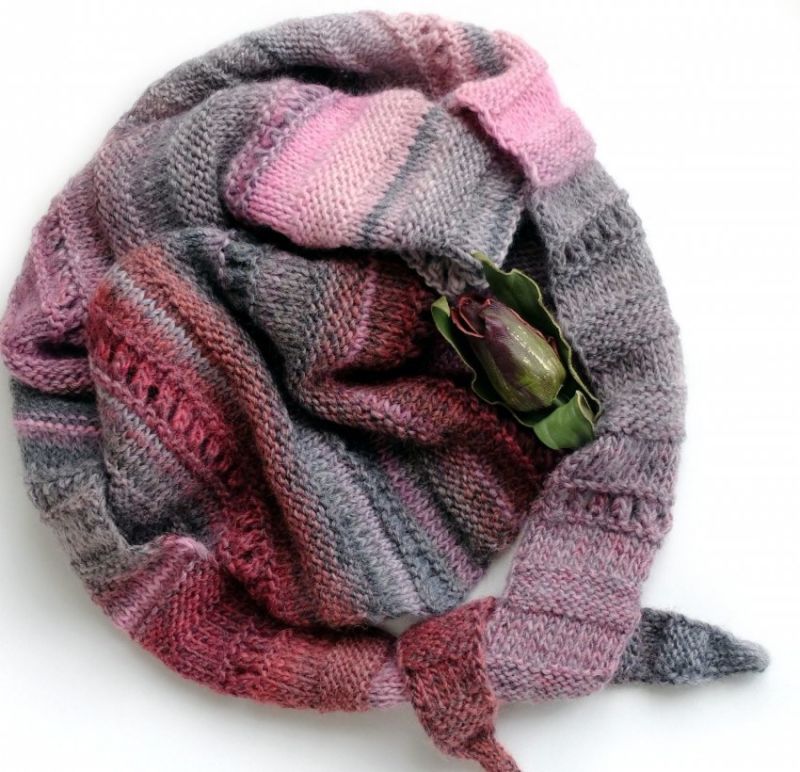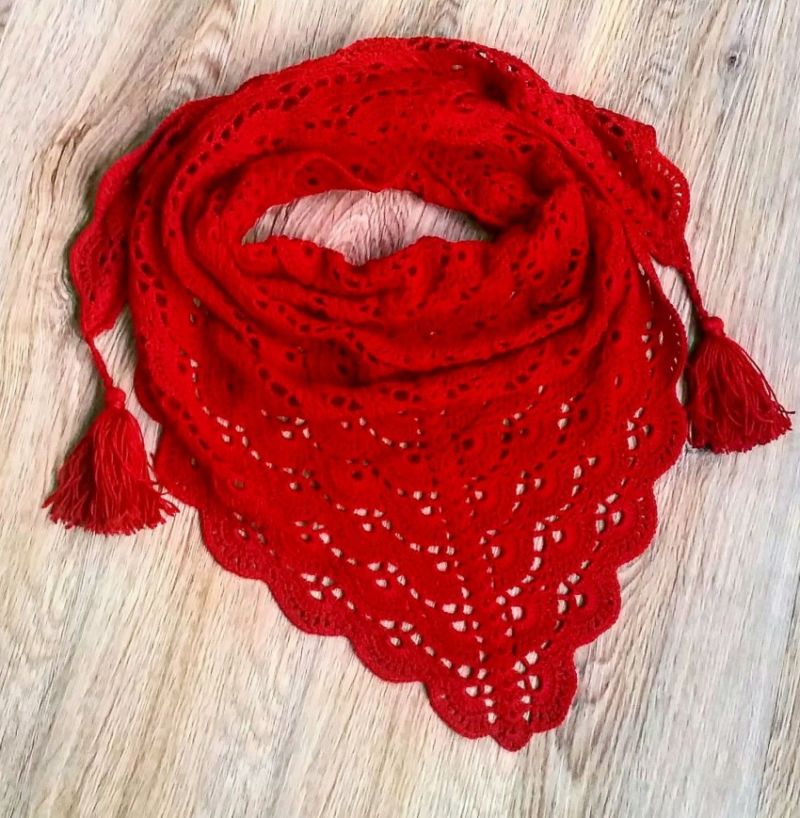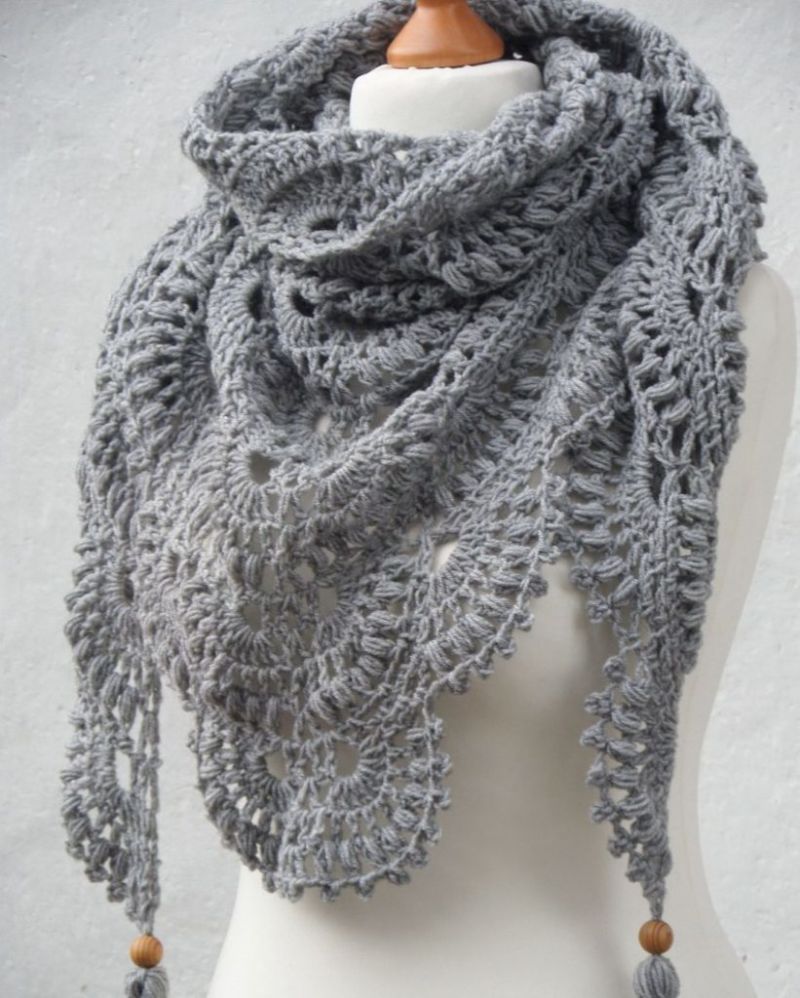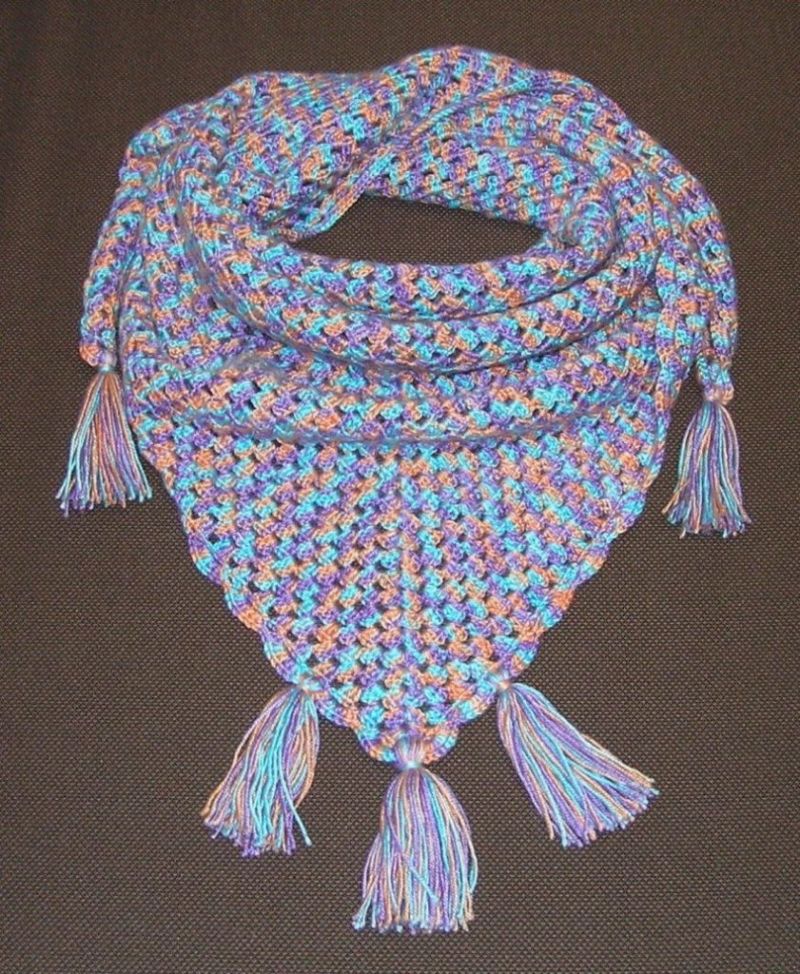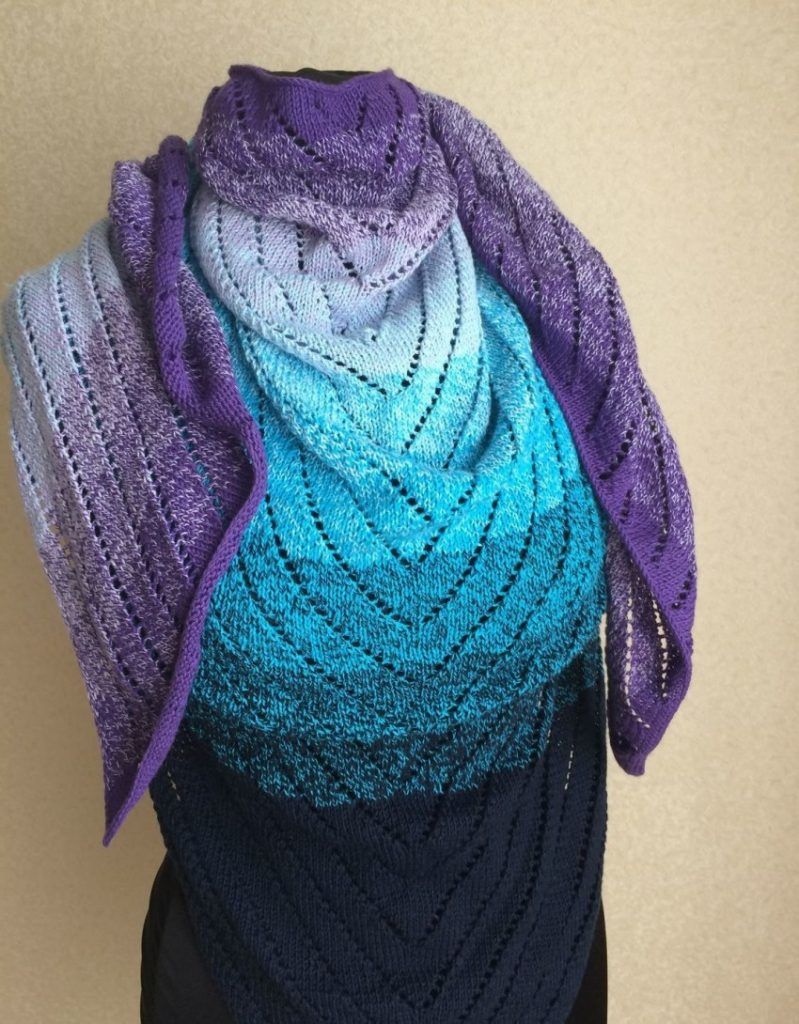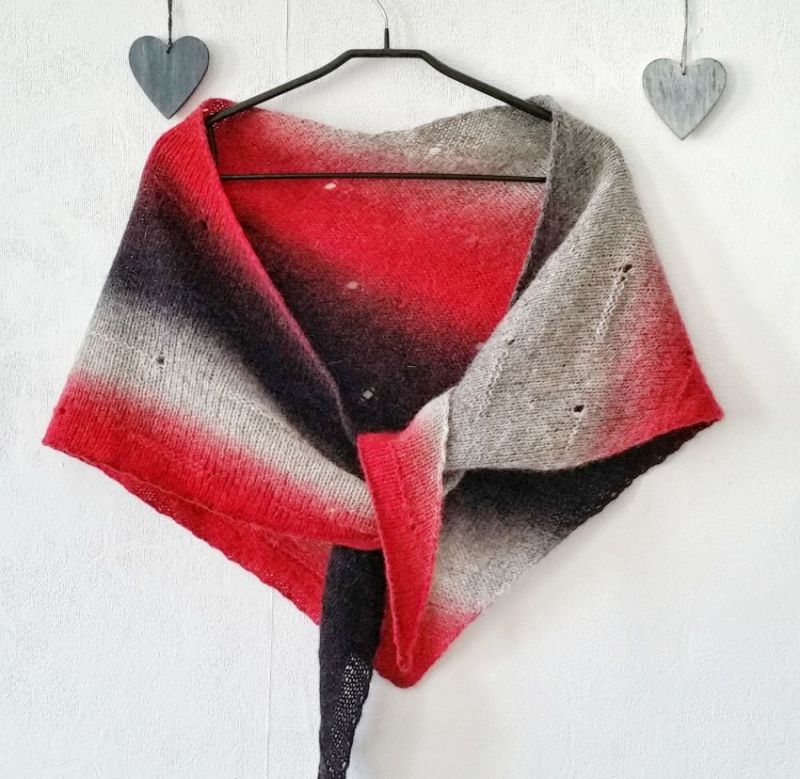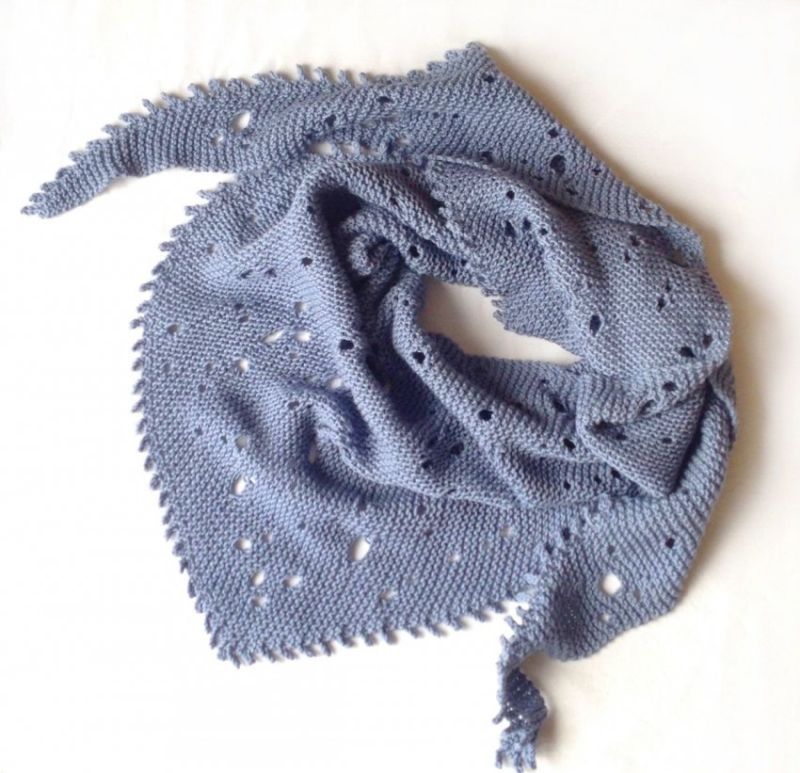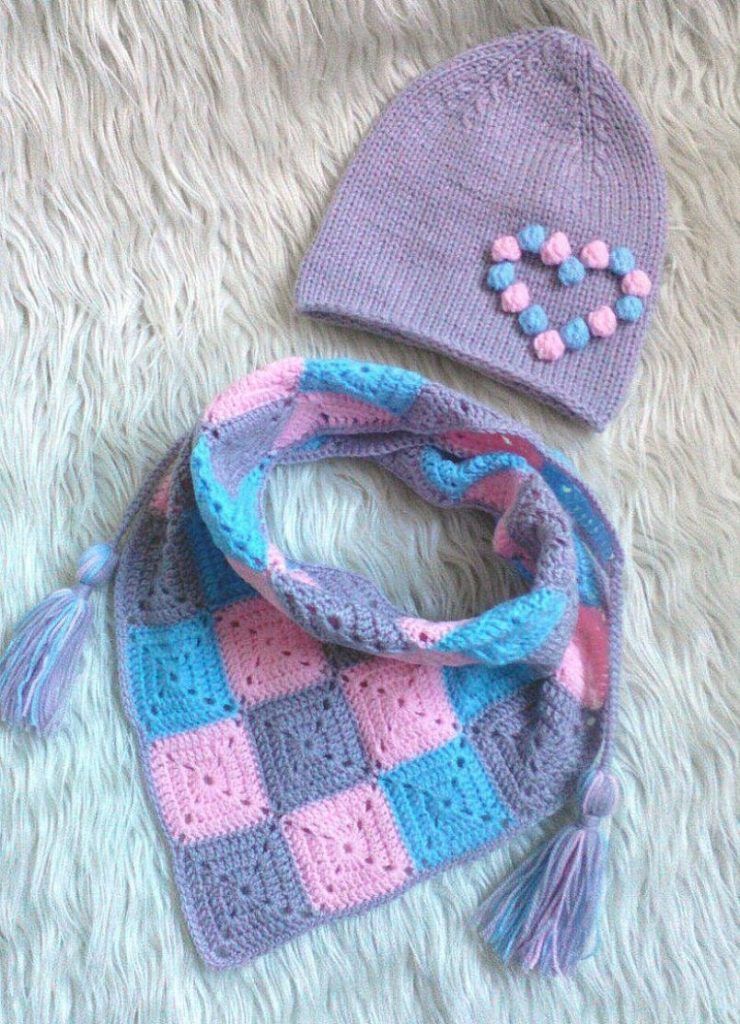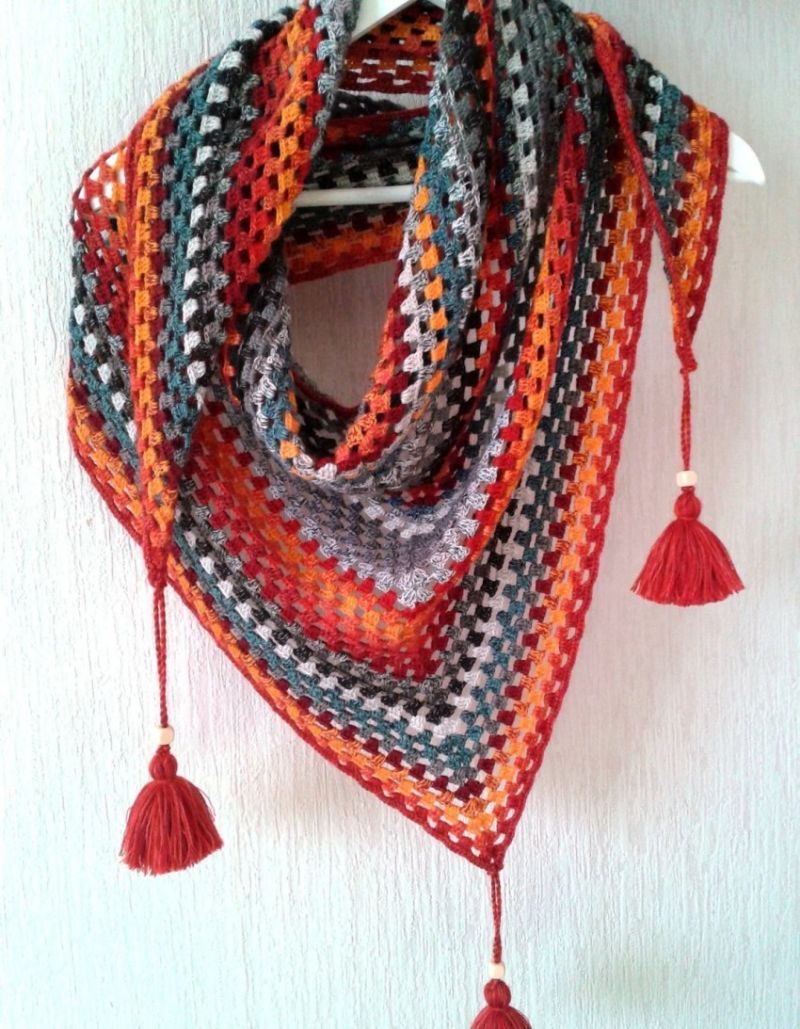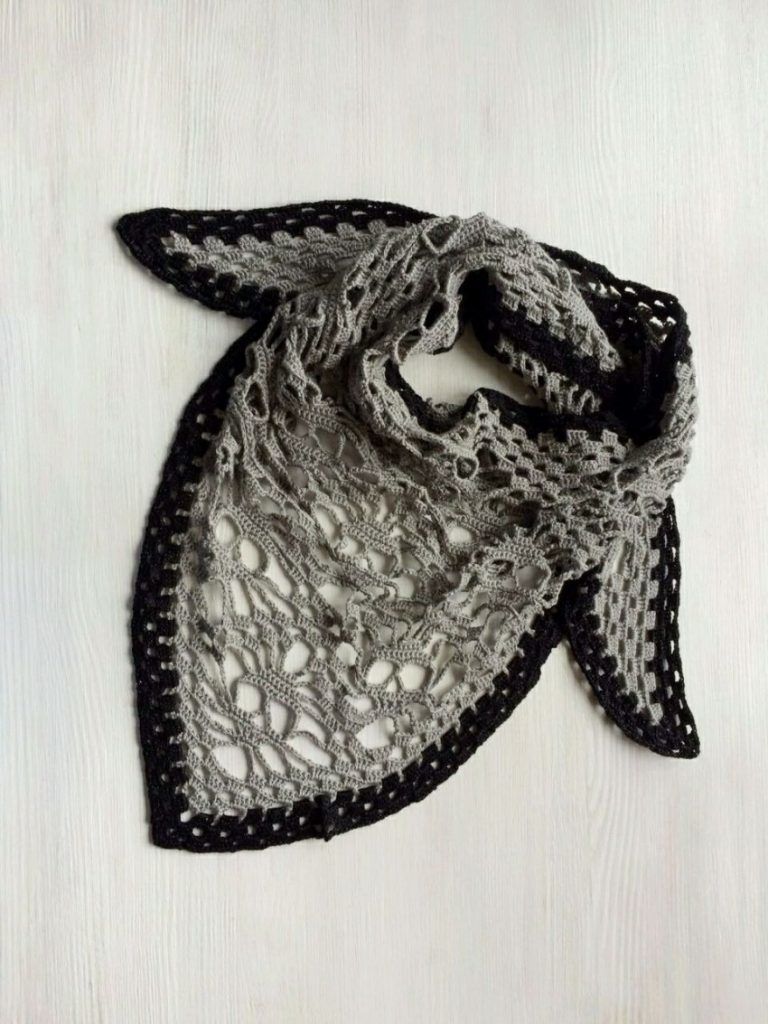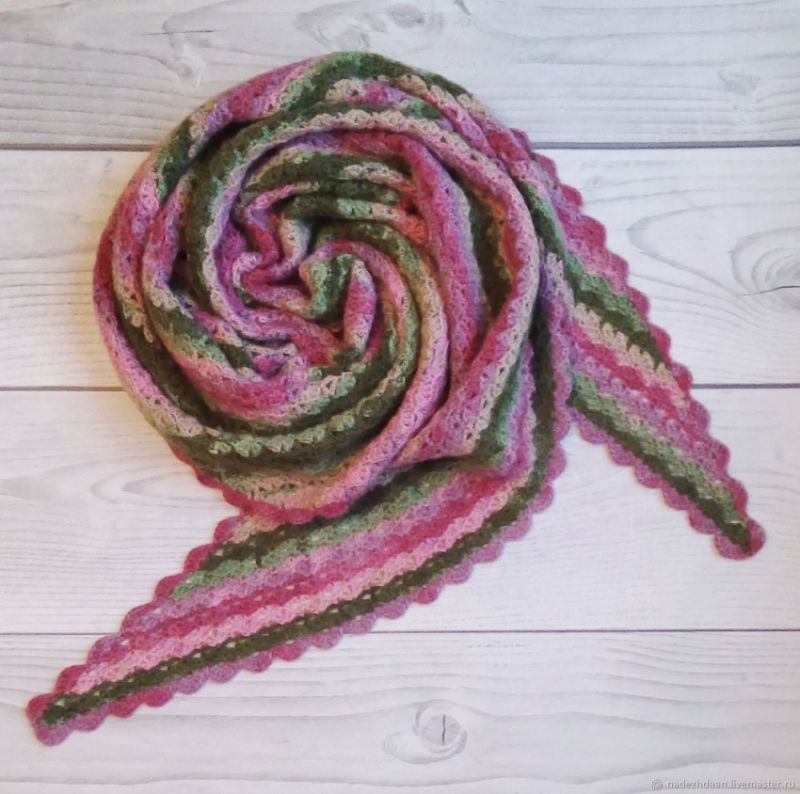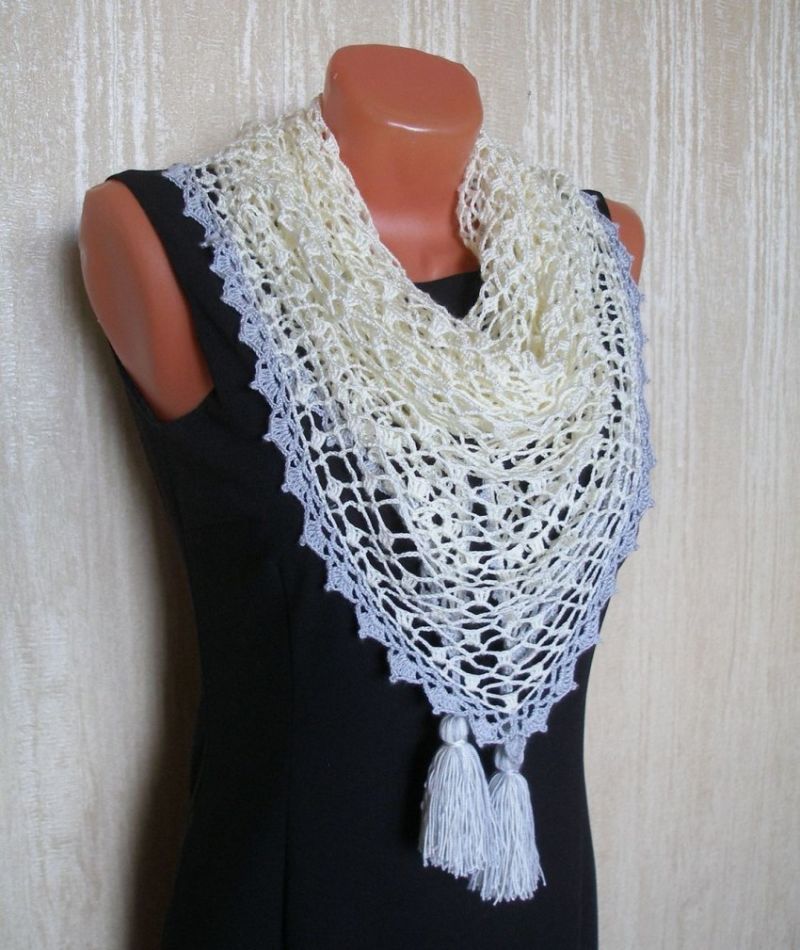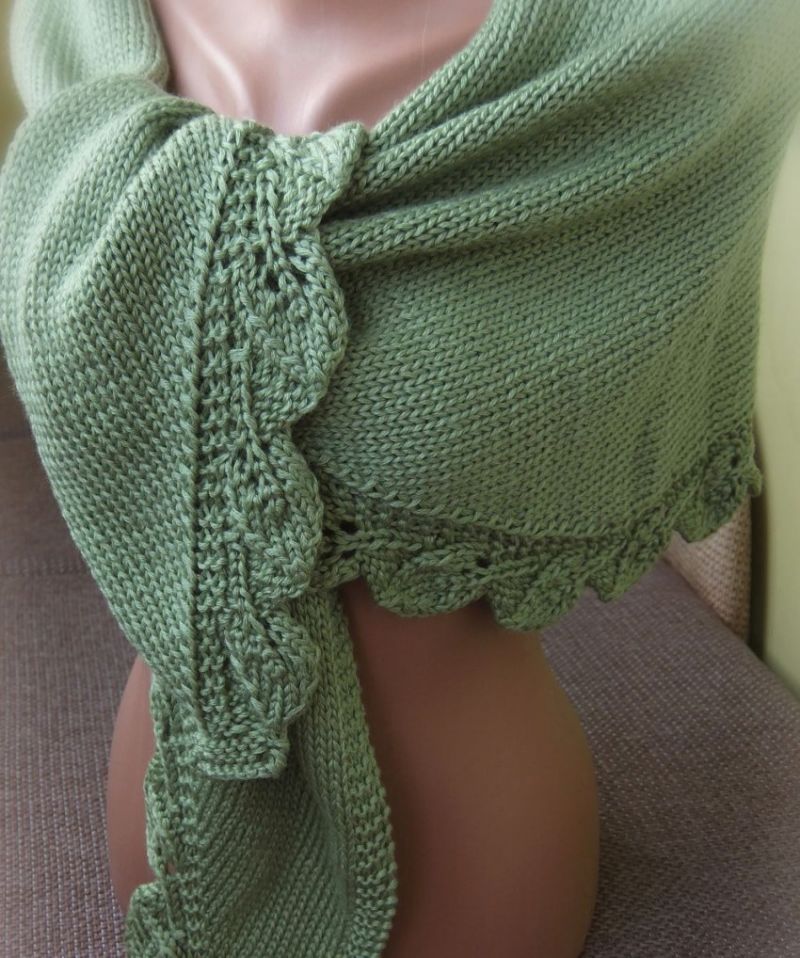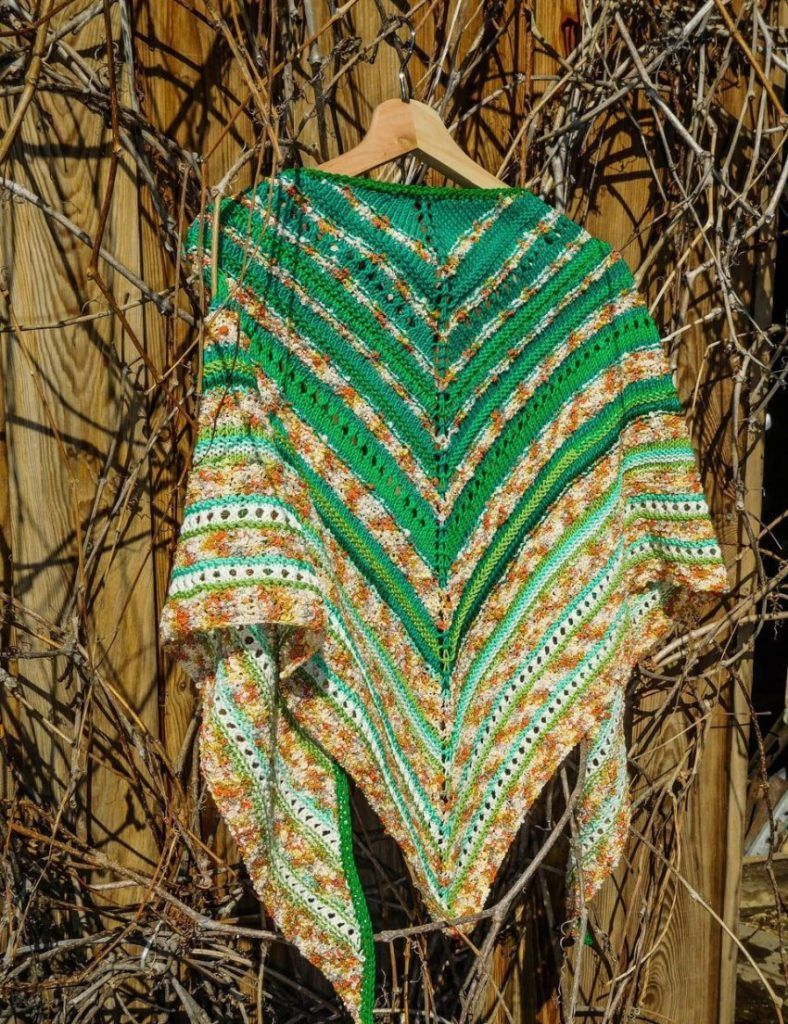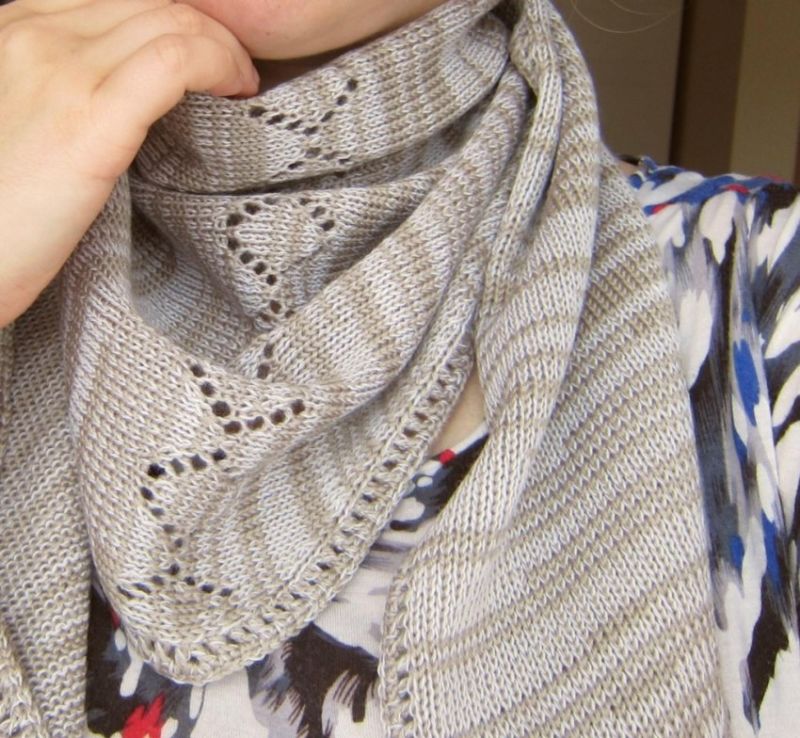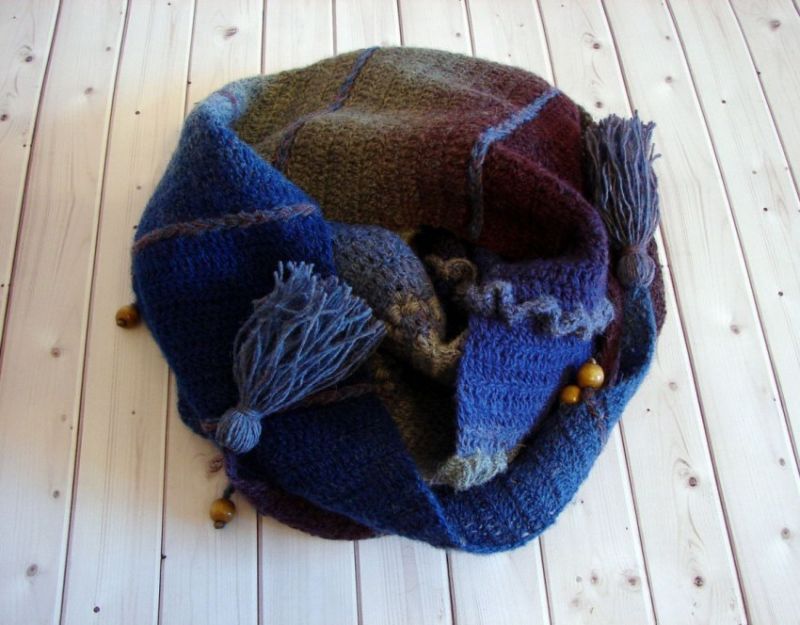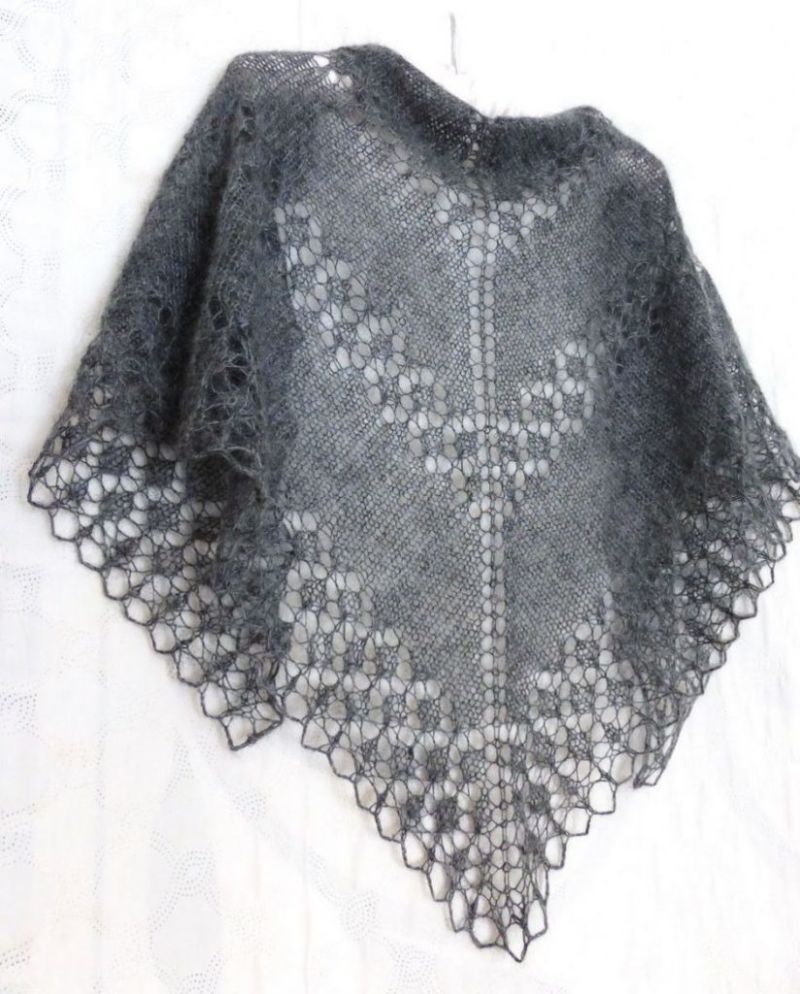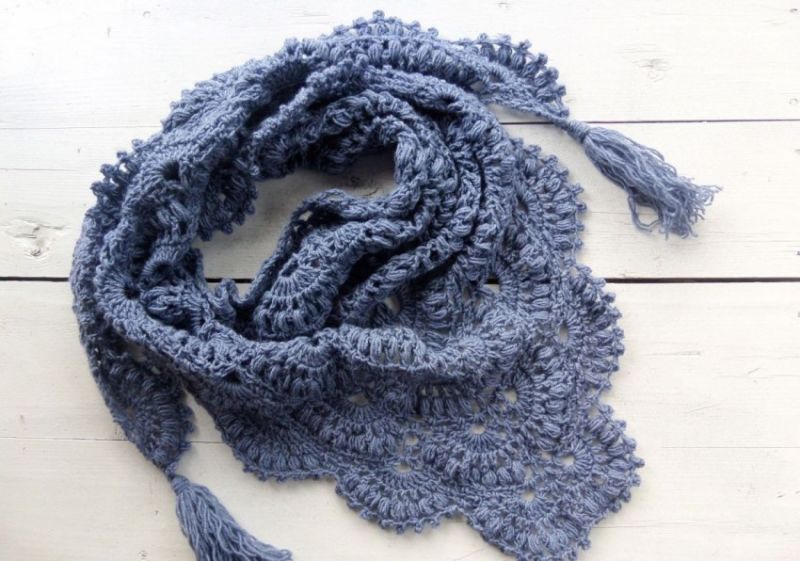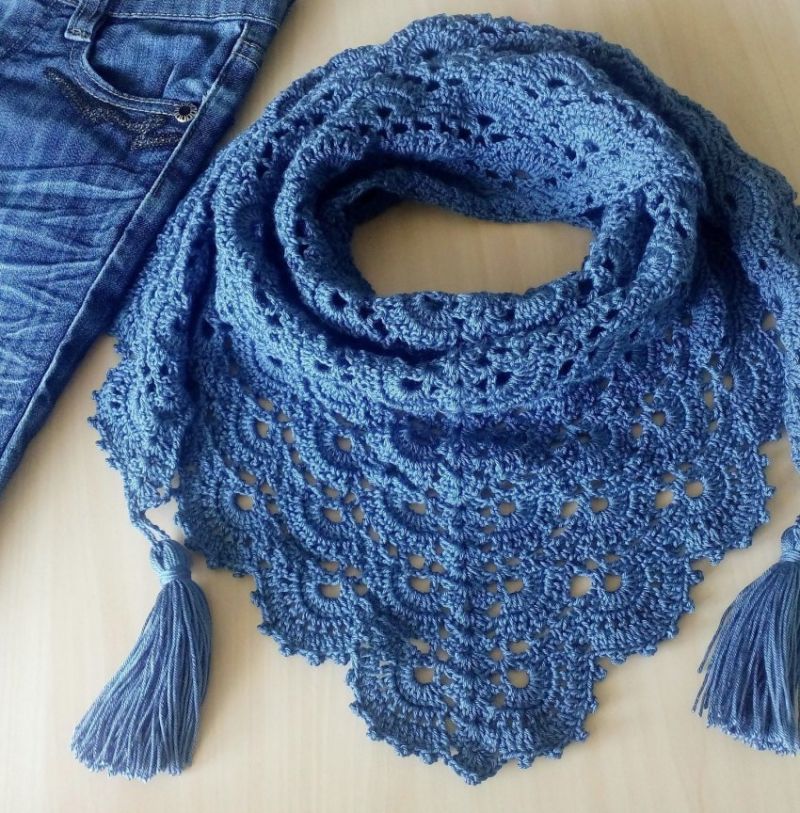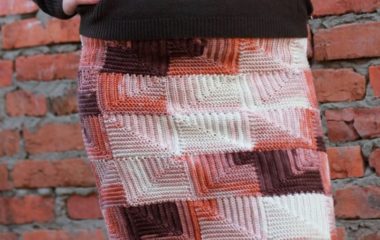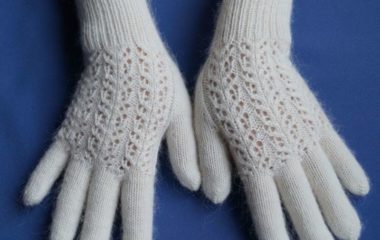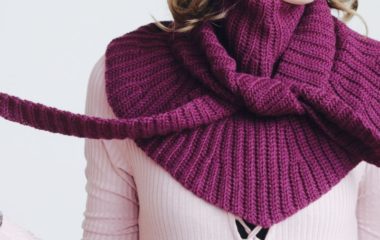Crochet cactus and knitting: step by step schemes of different patterns for beginners
Numerous needlewomen have long realized that the knitted product is unique and has a special energy. Formed with their own hands an object of the closet, a reason for pride.
In this article, let's talk about bactus, which we will make with our own hands. For what reason it has gained widespread popularity and ways to knit it.
Basics of Bactus
Baktus is a scarf with a slight trilinear nose exactly in the middle, similar in configuration to an isosceles triangle with a blunt top and long stretched ends.
Approximate correspondence of length to the middle at least 1:4. For example, if the length is 160 cm, in which case half is approximately 40 cm. But in the case of 100 cm, the half is no more than 25 cm.
In addition, cactus:
- functional - it is used both in winter and in the summer season;
- it is practical - it is worn both by the representatives of the stronger sex, as well as women;
- diverse - in addition to traditional modifications, the market offers a large number of styles, so that it is possible to choose a unique one to your taste;
- universal - the type of production is limited only by the flight of one's imagination
- Suitable for a variety of clothing styles, including traditional, formal, sports, boho and many others.
Patterns of knitting cactus by knitting needles
It is possible to make it as a professional in this art, including beginners. But there are some recommendations, for the first work, it is desirable to select the elementary and clear patterns, for example, the front or back.
Consider the description of knitting cactus for beginners:
- For the basis it is necessary to make a sample to visually demonstrate the scale in the finished version.
- Particular interest should be given to the selection of yarn and needles. It is necessary to choose mostly natural material, and it is better to take ring knitting needles with a narrow and flexible wire.
- It is necessary to make a template, then calculate the saturation.
- The process begins with the top of an obtuse angle (if you imagine the shawl in a triangle version), or the main side. The model is given an outline by adding hinged loops on the downdraft sides.
Consider the scheme of knitting baktusa by needles:
- It is necessary to dial 6 hinged stitches, 3 l. and 1 non. st., then 3 l. and 1 non. Continue knitting this way.
- From the first to the sixth circle knit according to the scheme: on both sides increase the number of loops by 6, on both sides do the stitches and additions.
- Knit in a similar way up to the desired length - 180 cm, and then overlap the loops.
- To embellish the corset with tassels in the corners of the product, you will need 80 sections of yarn with a length of 30 cm. With their help, it will be possible to make 3 tassels with a length of 15 cm.
In case there is a desire to crochet, count 373 p, and knit as follows: 2 sts knit SS, then increase the loops and make 1 pico (ZVP, 1SBN in 1VP), thus repeat 61 times. Complete the other half of the cactus in the reflection of the mirror.
Openwork cactus
How to make a very elegant lace scarf. The model of making, will certainly appeal to everyone who prefers to knit with knitting needles. Especially elegant looks a young girl wearing a lace scarf. It adds a certain airiness to the whole image.
Tie a lace product is not difficult, as a rule, it is the same as knitting with a satin stitch. However, there is one difference, filigree kerchiefs - kerchiefs have a border. Fringe - the lace edge of a knitted scarf, kerchief or baktusa.
Consider the components to work:
- yarn (100% merino, 100 g / 307 m) - 3 skeins;
- ring needles - № 3, 5;
- 2 stocking needles;
- crayons;
- additional threads for a set of loops.
Main patterns: shawl knit, overcasting, lace pattern, edging.
Knitting saturation: 1 rapport = 18 sts = 9 cm.
Workflow:
- Making the pattern begins with the longest side.
- It is necessary to dial on circular needles 316 p. and knit the main pattern.
- For the reduction of the row, starting with 8, we'll add stitches to 12 p.
- On all sides 6 stitches are removed, that is, in 8 and 12 stitches on both sides of 2 stitches.
- In 10 stitches on both sides of 1 st.
- Then switch to straight needles.
- After 74 cm from the beginning of the set of loops, close the remaining 4 sts.
Warm scarf.
Consider knitting a scarf, with good recommendations there is nothing easier. Many people like to knit a bactus shawl, with such purposes, you need to dial 155 loops on the needles.
But if knitting an ordinary scarf, with the same pattern, in that case it is necessary to dial 36 p. on spokes and repeat 72 p. of knitting in the height of 2 times. It turns out the scarf: 36 p. in width, as well as 144 p. in height. It is possible to make pompons or terry the edges of the scarf. The product in this case turns out 100 cm / 100 cm.
To make it will require:
- Thread Phil Light (Acrylic (50% acrylic, 30% polyamide, 20% wool) - 300 m / 50 gr. Purple, as well as creamy tones, 3 skeins of a certain shade.
- Needles a width of 5 millimeters.
- Hook, 5 number.
Knitting a shawl is not difficult. If you follow the instructions, everything will work out. The procedure of the activity:
- The saturation of the knitting: 10 cm = 17 sts. and 22 r.
- As previously mentioned, gather 155 stitches.
- Knit: 1 strap, then repeat 4 times from first stitch to 34th stitch, and 1 time from first stitch to 17th stitch.
- Finish with 1 edge st.
- At 90 cm (217 sts), cover all stitches.
- By crochet make 1 row of stitches.
Shawl knit
This kind of baktus, a good option for beginners, or for those who are trying to find themselves in the art of knitting. Any needlewoman begins to learn how to knit with a scarf directly to the knitting. This type is also known as the usual way of knitting.
Such a name is explained quite simply, directly this pattern is knitted handkerchiefs. In general, it is used for the background, in order to apply ornaments.
In shawl knitting used directly to the front and back loops. By alternating these loops and is made bactus:
- For knitting we will need: 400 gr. Yarns and needles #6.
- The saturation of knitting: 18 stitches for 30 layers.
- Approximate scales: 28 cm by 165 cm with no selvedge, 33 cm by 190 cm with selvedge.
- For face knitting, the thread should be on the back. It should be taken out by inserting a needle in front.
- For the back stitch, it is the opposite, the thread is in front, but the knitting needle enters behind.
In order to proceed with the needlework, it is necessary to dial in the stitches. For a sample, you can start with a small number, 20 stitches. The shawl knitting is done in this way:
- 1 stitch is taken off, then a full row is knitted with a face knit;
- The final stitch is backstitched;
- Turn the product on the other side and knit as the previous row, the last stitches are cropped and one row is in the right side.
Work is very basic, as a rule, directly with it begins any needlework.
Men's bactus
This is not only a ladies' attribute, but the strong half also prefers stylish things, to diversify their own closet. Men's attribute is similar to the usual scarf, goes well with a raincoat, as well as a great variety of down jacket.
Consider the knitting of the men's baktus by needlepoint, size 150 cm.
Will need:
- 200 gr. Gray yarn Qual Andes (65% Wool, 35% alpaca, 50 m/50 g);
- needles #8.
Knitting algorithm:
- Outer surface: face p. - face st., r. - N. st.
- Knitting density. The front surface: 11 p. 15 р. = 10 x 10 cm.
- Let's get to work. Put on 3 sts and work on the l. edge, committing to the right side of the additions: in 1 lettered p. make 1 rip, and then cross it.At a single height of 75 cm in the work should be 58 sts.
- In all stitches must be made 2 stitches, then from the right side there is a reduction: at the beginning of each l. p., after the crook, make a 1 stretch (remove 1 st as a l., 1 l. and pass it through the dropped stitch). Do the reduction until 3 sts are left in the work, finish the work.
Baktus wave-cut
Such a product as a cactus wavecutter is much easier to knit than an ordinary cactus, but it looks quite impressive.
All that will be necessary is to have the ability to knit on the right and wrong side, or shawl knitting. A distinctive feature of this product in the form and choice of tone of thread.
It is possible to choose a monotonous yarn for a relaxed image, or melange, in which case the transformation of "wave" will be more exciting.
Making a bactus wave cutter relatively can be divided into 3 stages: increasing from the corner, the main part, and decreasing to the corner.
To work you will need:
- needles № 2 or № 3;
- crayons;
- Yarn, in general, the correct way would be merino, elastic thread, about 300 grams.
In principle, you can take a different and different yarn and optimally suitable needles. It is very important to observe the principle of knitting:
- Alternating 6 layers of outer and backstitching. In each 6 pct. you need to add 1 st. only from one edge of the product. Knit in this way until the length of the piece reaches 40 cm.
- Shape, to do this: add 1 st at the end of each 2 p. from the 1st edge; from the 2nd edge, cover 1 st, at the beginning of each 6 rows. The procedure continues for another 30-40 cm.
You can make the corner of the product more rounded. To this end, knit another 10 p., without additions, but after the completion of the main work.
For the removal of loops, in order to complete the knitting, it is necessary at the beginning of each 6 p. remove 4 p. The edging will be formed in the form of a staircase. At the same time at the end of an even number to add 1 st., the same perform the same at the beginning of an odd number.
In a similar way to lead the product to a narrowing, up to 3 loops and also cover them easily.
Description of crochet cactus
The execution of baktus crochet is similar to the usual scarf. The main difference in the form, as a rule, it looks like a triangle. The decor of crocheted scarves can be different, ruffles and pompoms. Due to the fact that it has an unusual shape, it looks accordingly more fascinating than an ordinary scarf.
With leaf pattern.
In the finished version, the volume is 33 cm by 154 cm.
For the work you need:
- yarn of the main tone - approximately 100 g;
- Yarn of diametrically opposite tone - about 100 g;
- Circular needles number 2, 5, length not less than 80 cm.
How to knit patterns with needles: shawl knitting - absolutely all rows, all without exception loops facing; the intensity of knitting: in a shawl pattern of 24 p. on 31 p., meets the square of 10 cm by 10 cm:
- Main part: string 3 sts;1 p.: from 1 st. - 2 sts. Faces; 2 p.: 2 sts. in 1 of R., facing to last st. of 1 st. - 2 l.
- Repeat this and another row without breaking the thread 4 more times.
- Leaves.1 p.: from 1 st. - 2 st., up to the last stitch,
- from 1 st - 2 sts; 2 sts, 4 and 6 sts: 1 st, 4 sts tightly wrap yarn and unwrap; 3 sts,
- 5 and 7: knit up to last stitch,
- with 1 st. - 2 l.; 8 p.: cover 1 st. with 4 l. broach, wrap yarn tightly on spokes and also unwrap;
- 9 p.: all the right-hand side;
- 10 and 12 p.: 1 sided and 1 l to cover 3 l., increase the thread on the spokes together with a stitch;
- 11 and 13 p.: all the obverse;
- 14 p.: 1 in. and 1 l. to cover 3 l., increase thread on spokes and also do with stitch, up to last stitch, with 1 st - 2 l.
- Cut off the thread.
- Then knit up to the required volume.
- Repeat the main part, also from 1 up to 13 again.
- Complete row 14 and close the loops.
- Tear off the thread and carefully hide the edge.
Multicolored bactus
The total volume of the shawl is 90 cm / 90 cm.
For the work we need:
- yarns Lambswool (50% Fur, 50% acrylic, 130 m./ 50 gr.) - 8 skeins;
- ring needles, width 3.5 mm;
- hook width 2 mm.
The saturation of knitting 10 cm, the pattern with the needles 24 p. and 37 p..
On the spokes 214 p. and according to the recommendations: 1 crochet. st., then knit once from 1 to 12 st., then repeat 8 st. in the frame and finish with 1 skeleton st.
At an altitude of 90 cm (332 rows), cover all stitches without exception. Hide yarns Hook 1 p. SBN, as well as 1 p. of the rachetta step. Lace shawl with scrolls ready.
Knitting from the middle
Consider knitting from the middle, master class with yarn Malabrigo Dos Tierras:
- Dial 3 p, knit 2 p. From the 2 edges, thread another 3 p, in order to have 9 overhangs on the needle.
- One row knit: 3 l., 3 of. (edge).
- Mark the center stitch.
- Add: 1 lap after the first 3 outer stitches, 2 lap before the main loop, 3 lap after the main loop, 4 lap before the 3 Ls.
- In this way until the end. 12 st stitches should be knit to the right, so that a certain image is obtained.
Japanese bactus
More and more crochet novelties of cactus by crochet are appearing. One of these is the Japanese cactus.
Needed yarns and hooks:
- For the main base you will need: Japanese yarns Excellent (100% alpaca) - 40 gr./80 m; hook number 4.
- For finishing as well as trimming: Japanese Refrain (46% acrylic, 30% nylon, 12% viscose, 6% alpaca, 6% polyester) - 50 gr./55 m; hook #6.
- To start the work, you need to begin with a knotting of 130 cm,102 rows, direction from the left corner. The height of the product 28 cm, 52 loops.
We can conclude that the bactus is not only a beautiful accessory that goes with any image, but also a warm delicate scarf.
This product is ideal not only for women but also for the male half of mankind.
Knit it very easy and simple. The main thing is to follow the necessary instructions.

